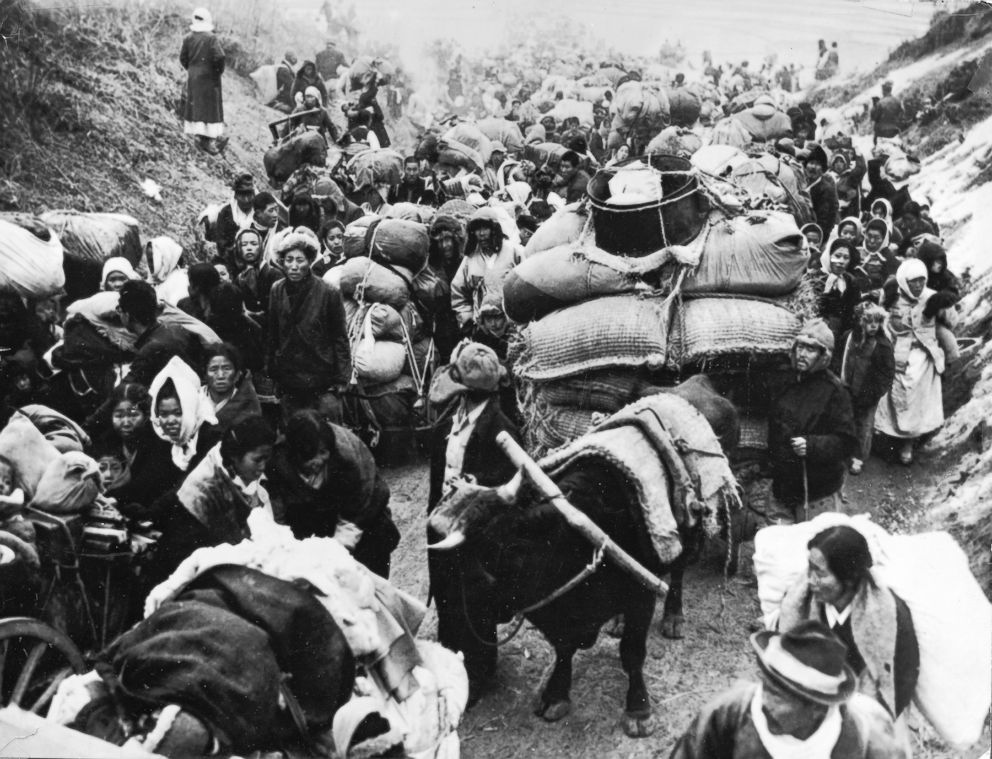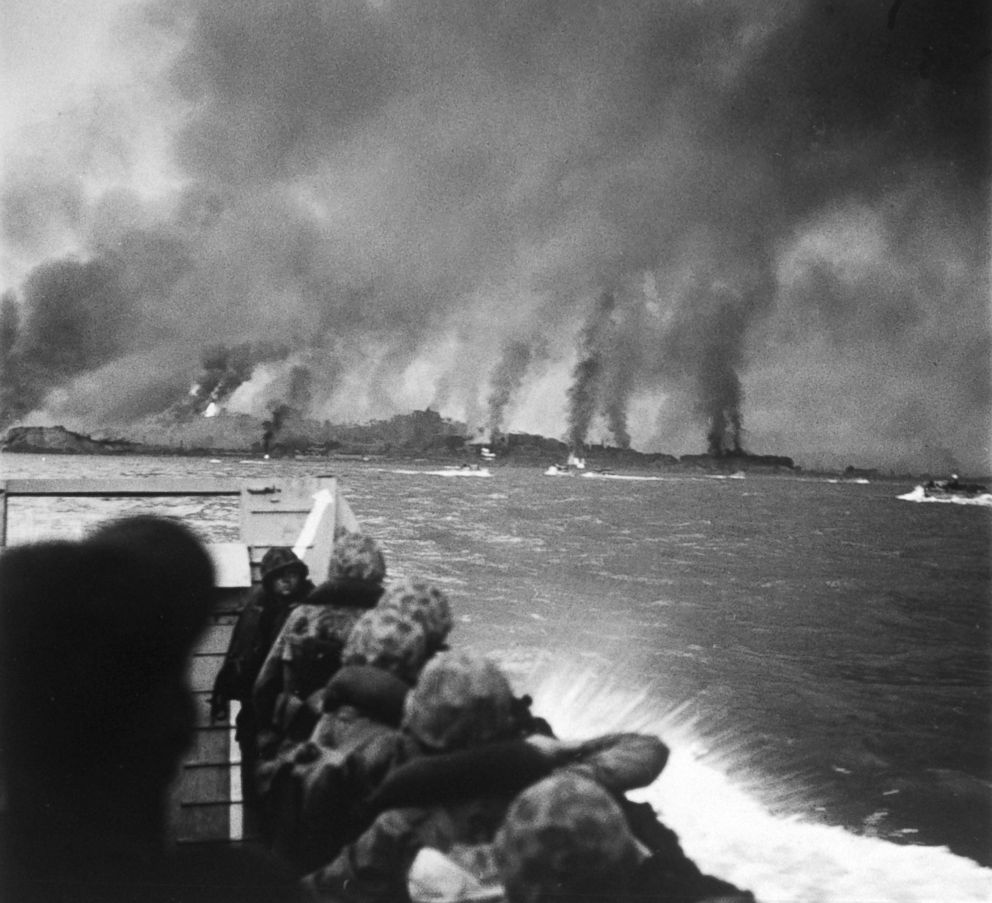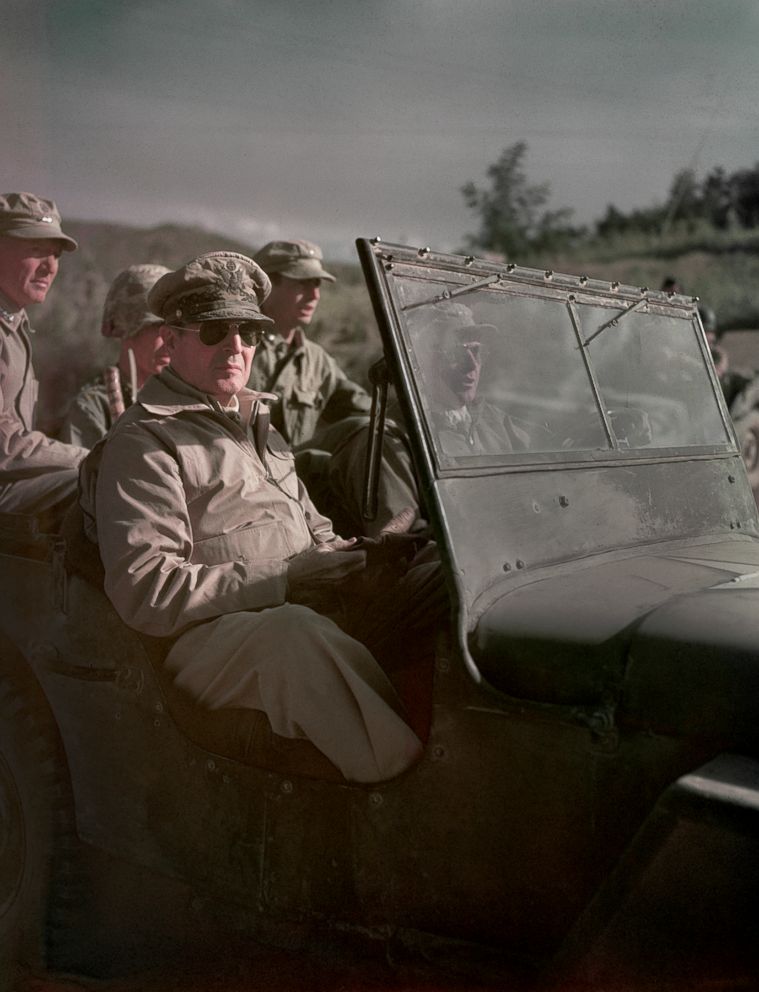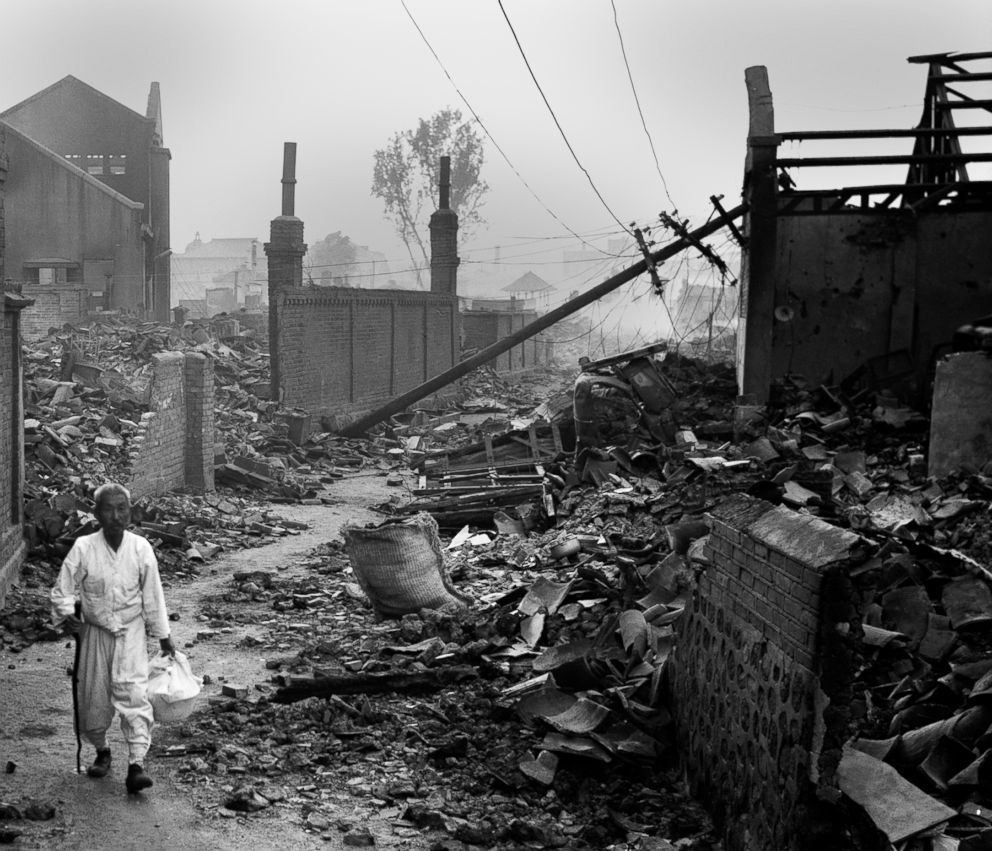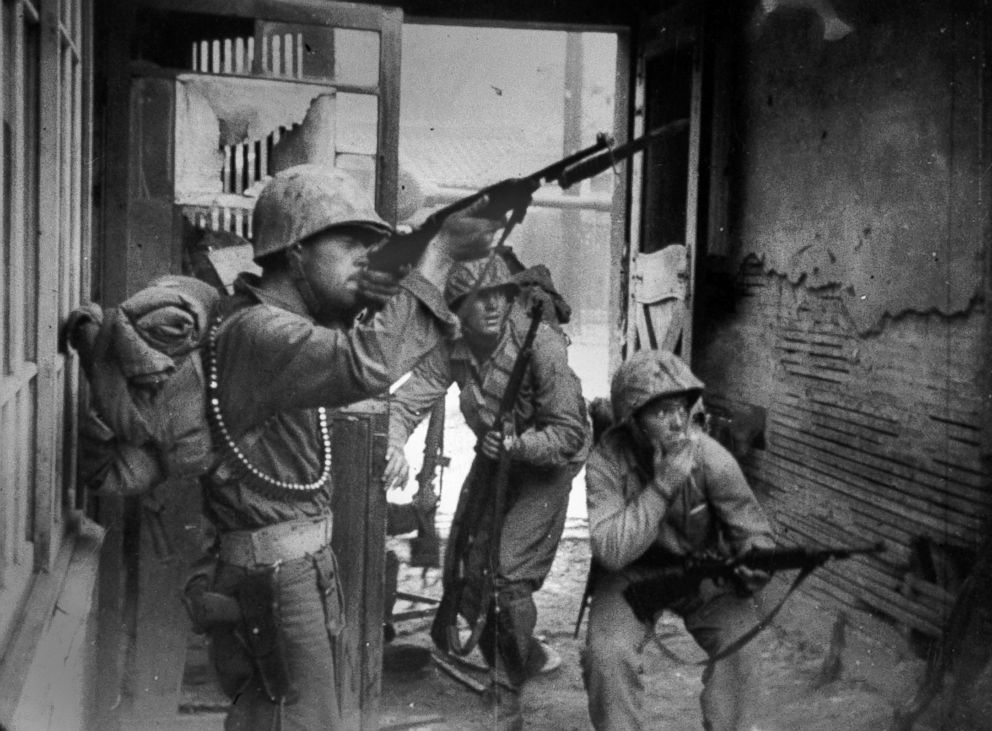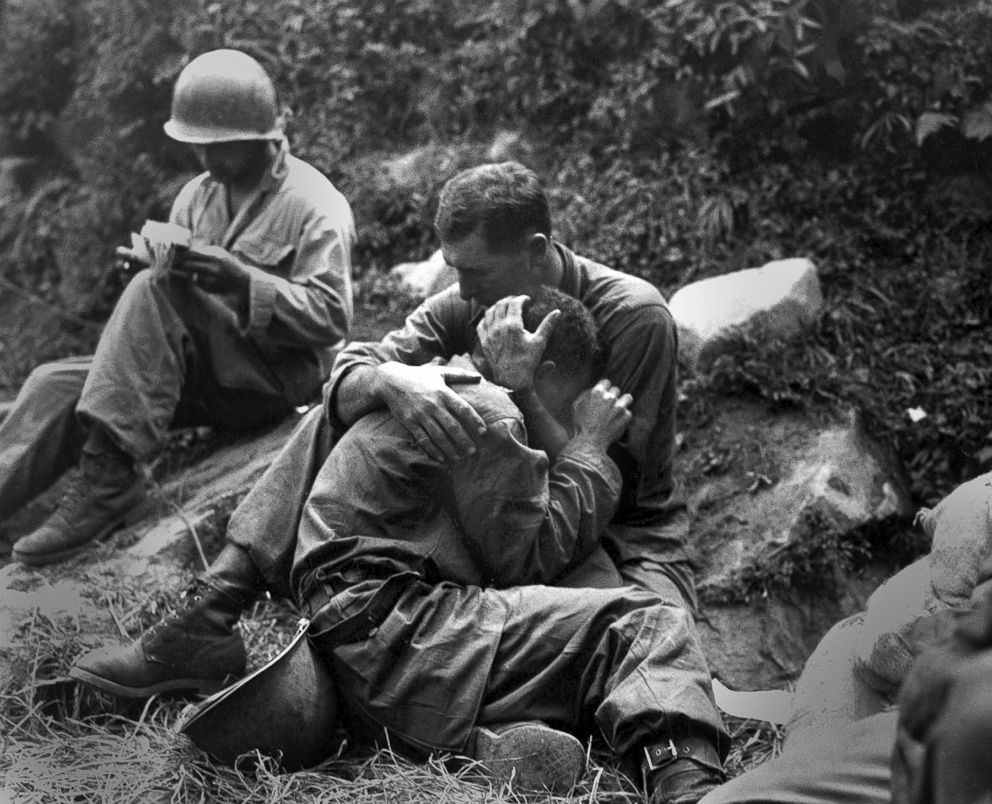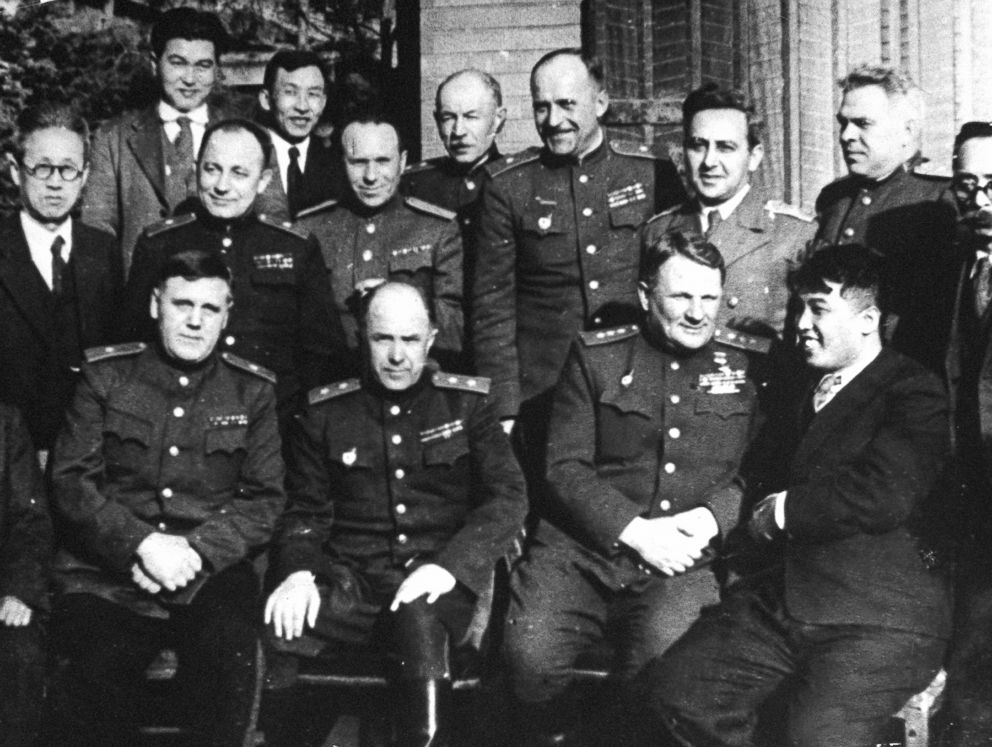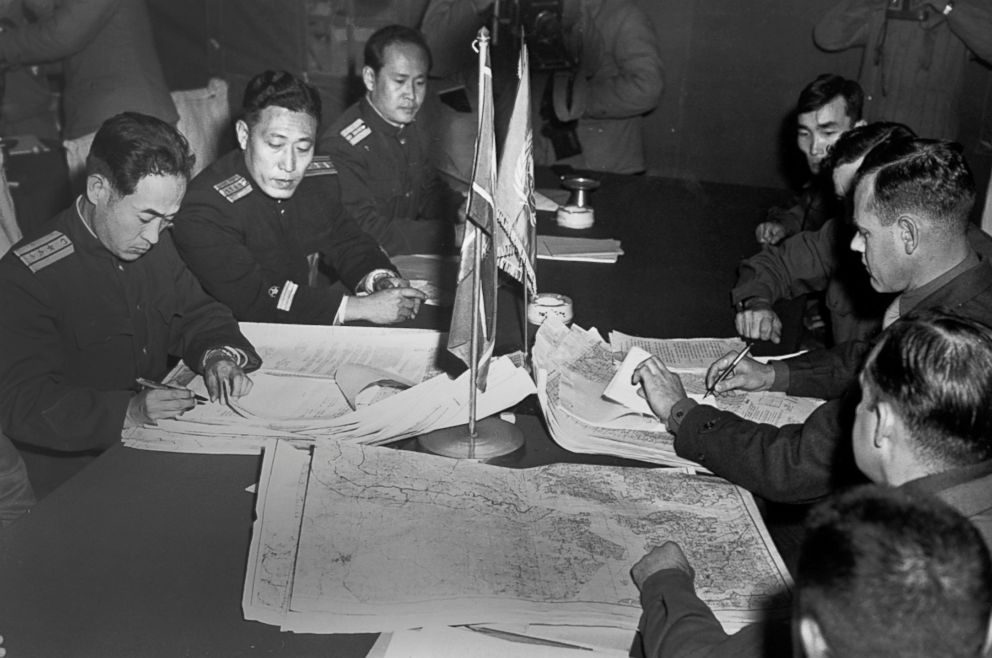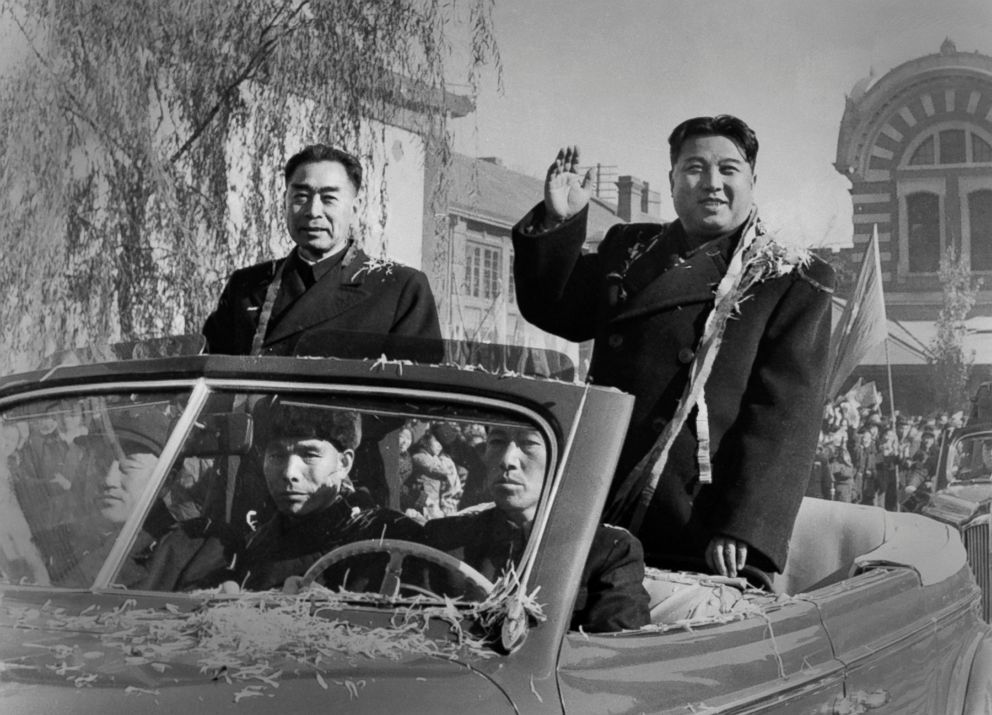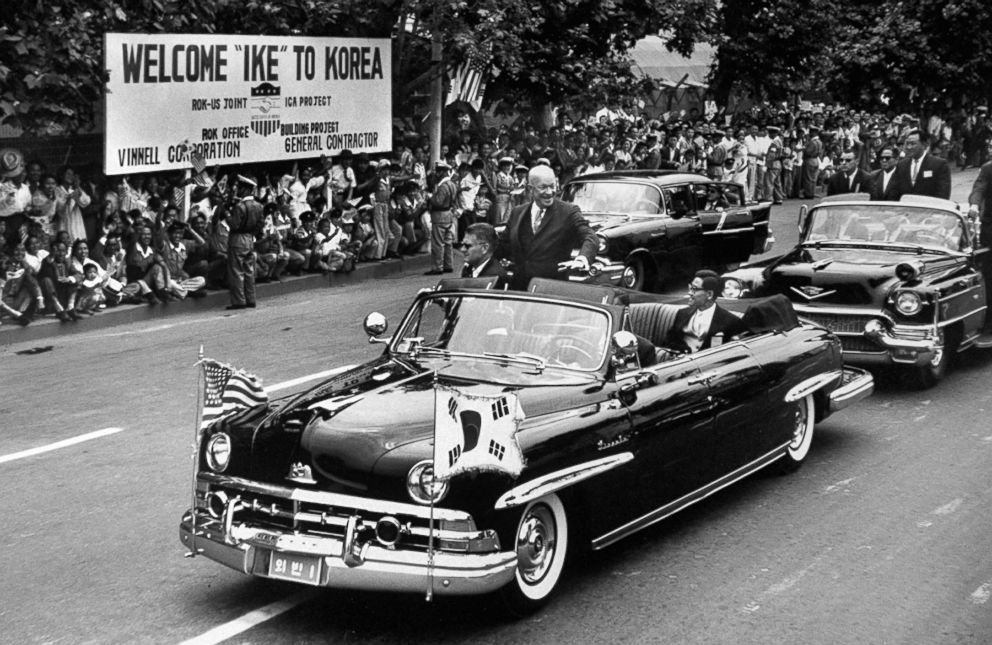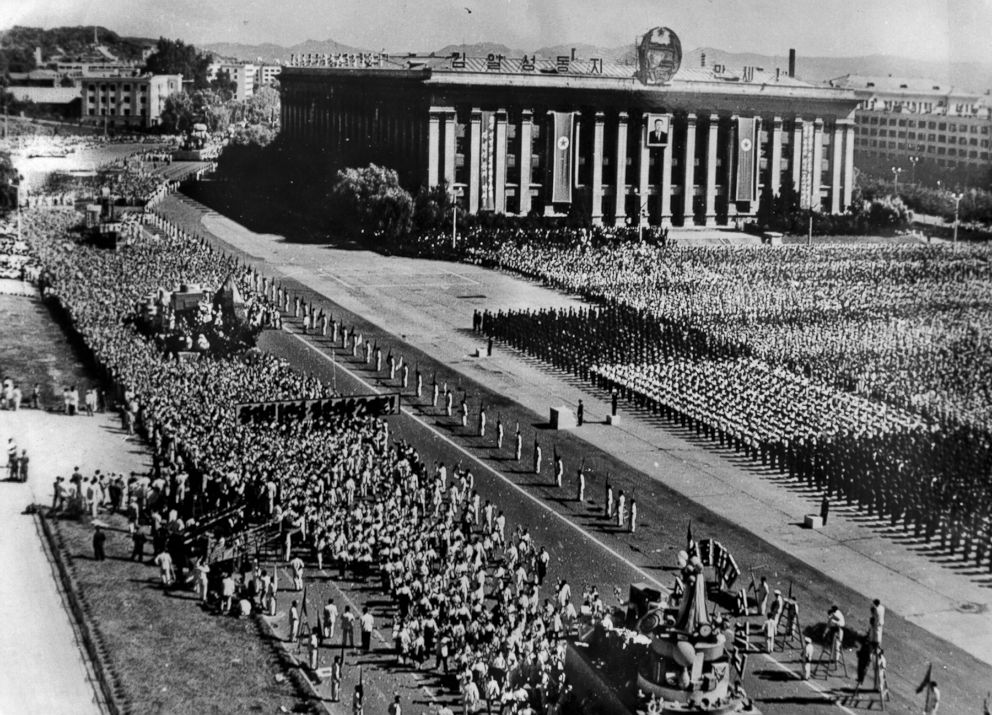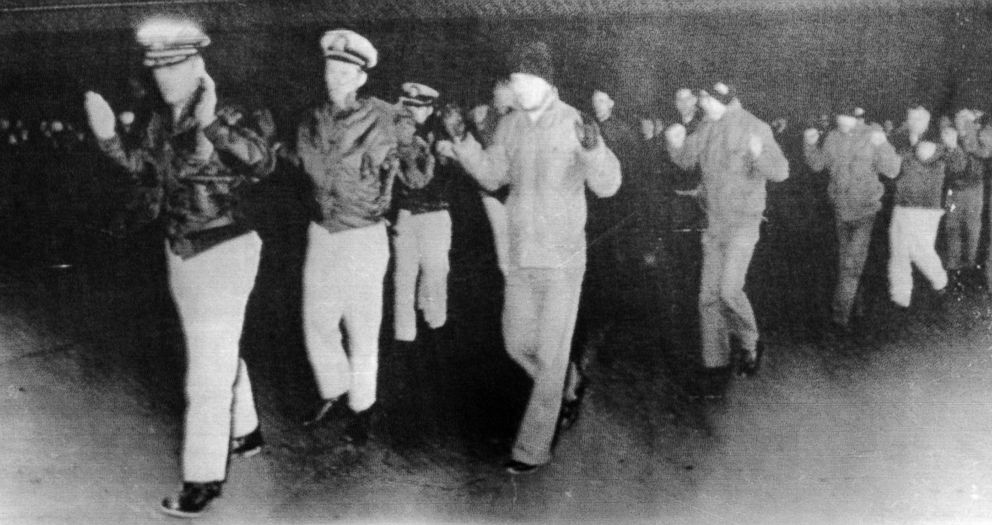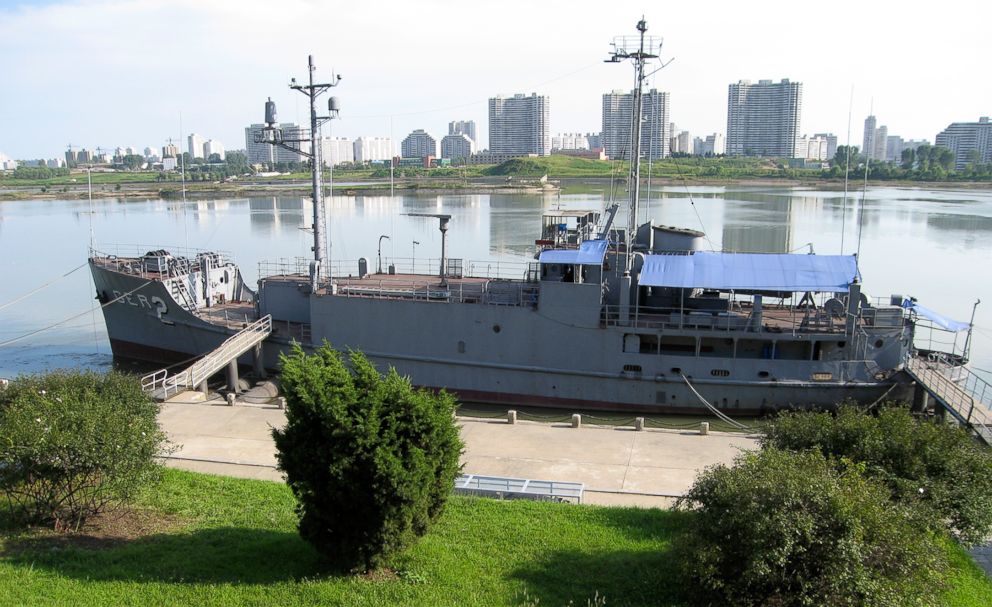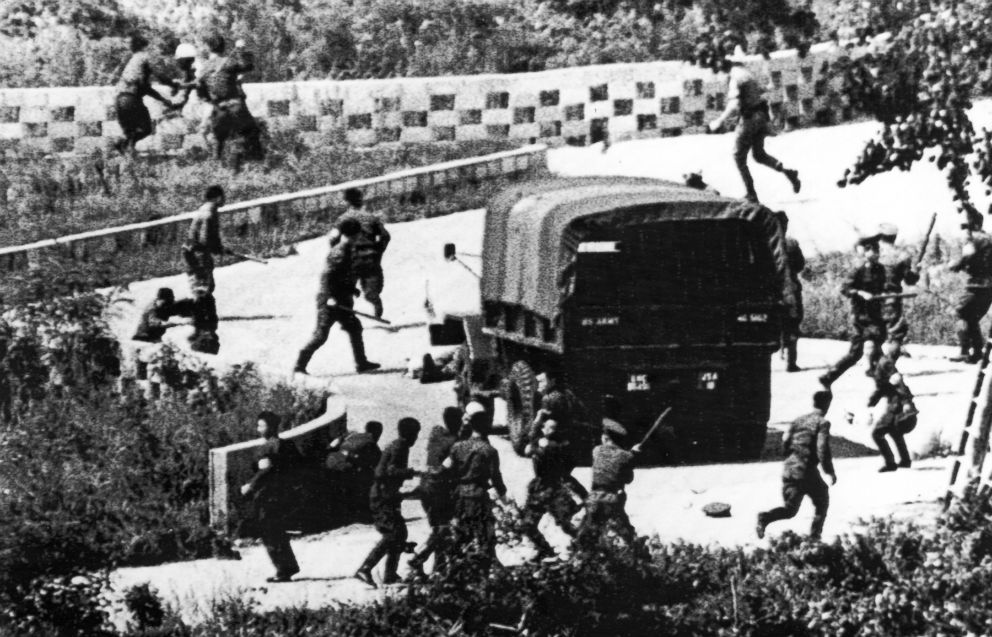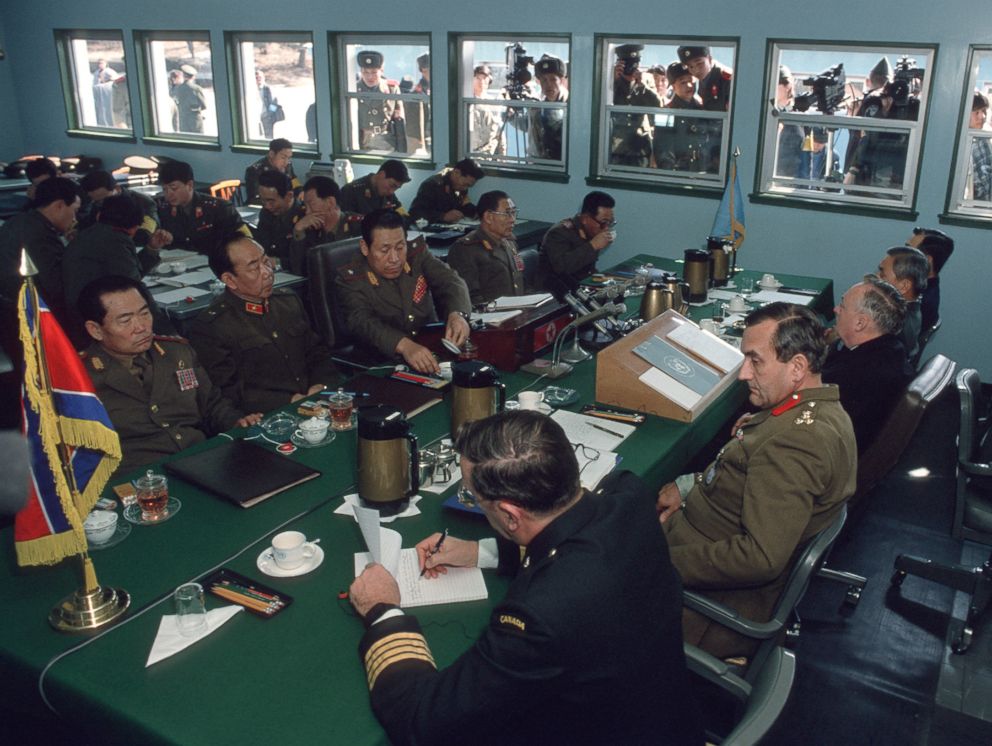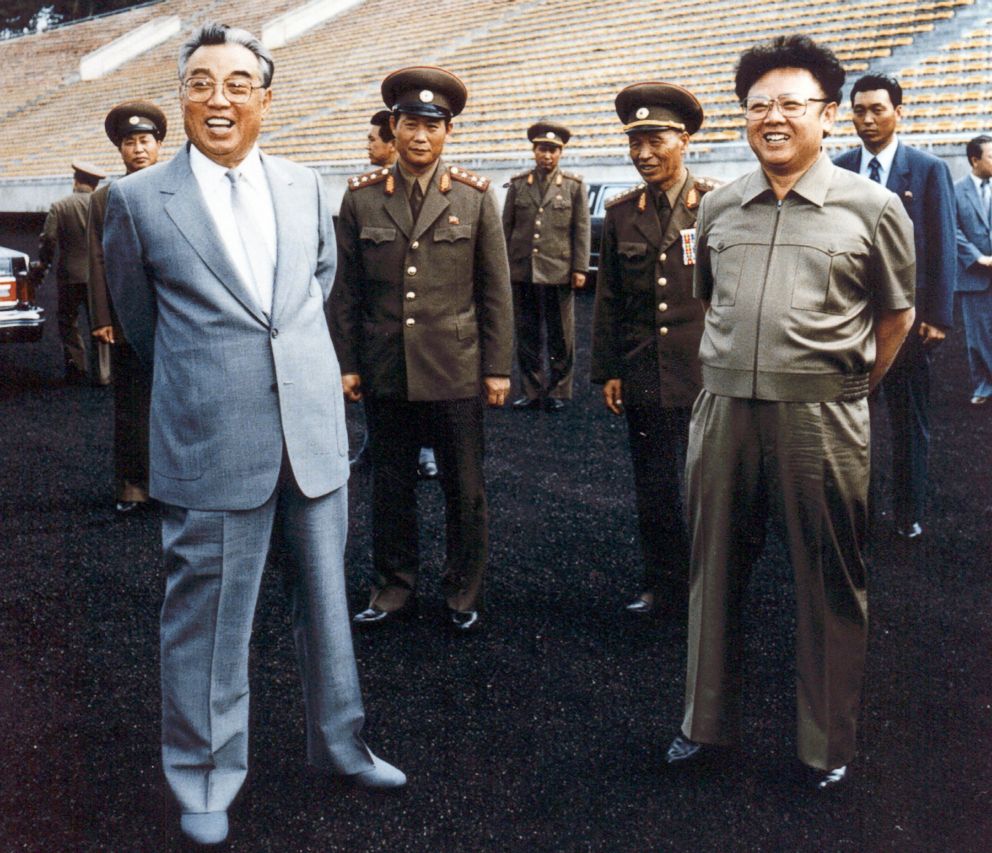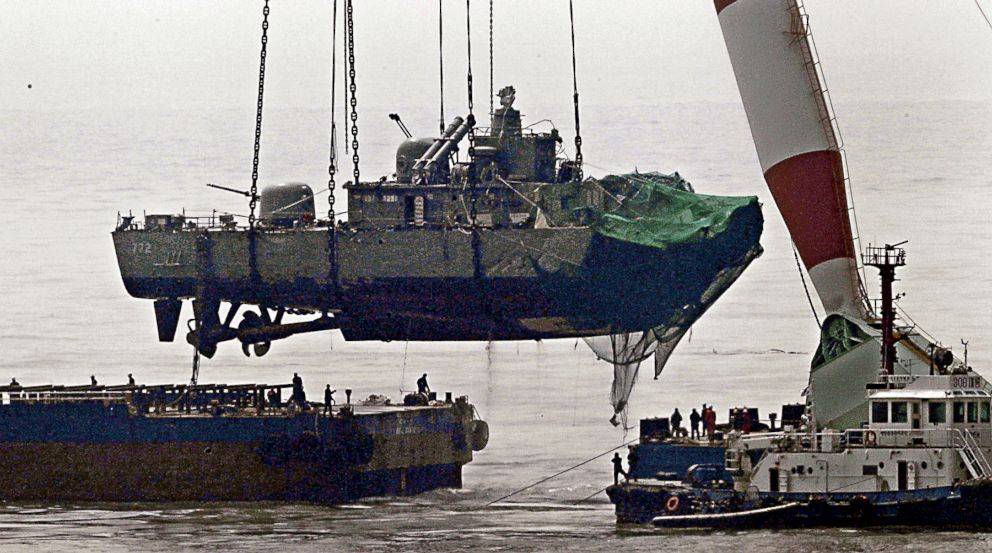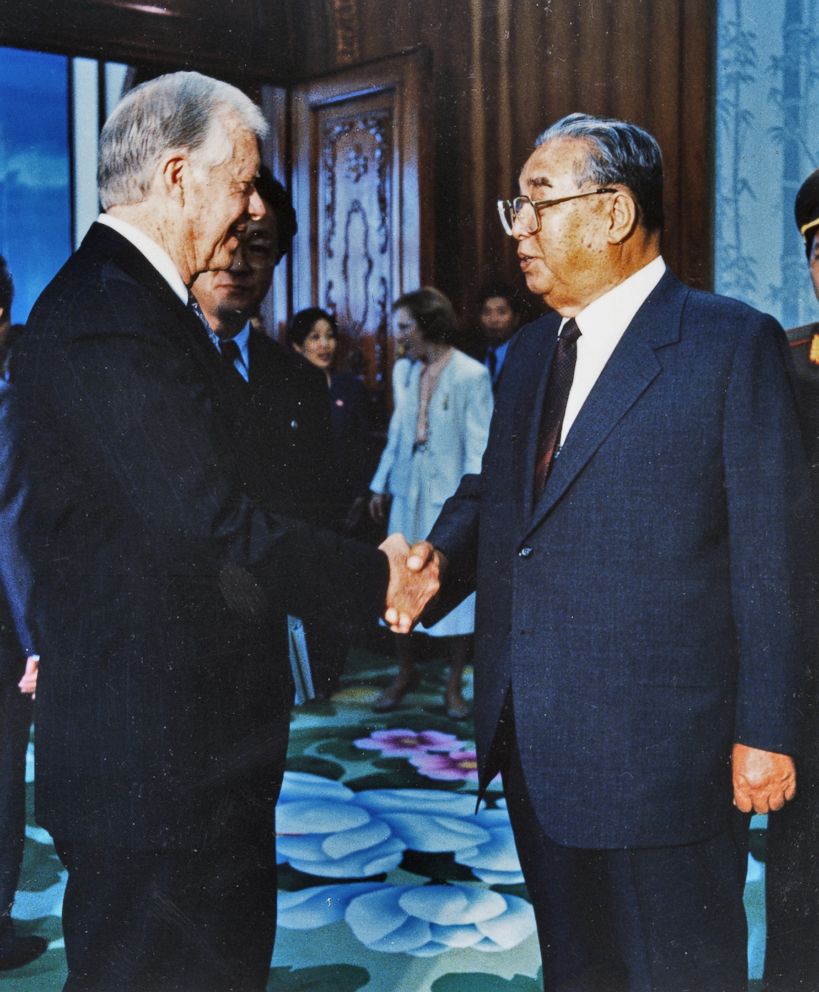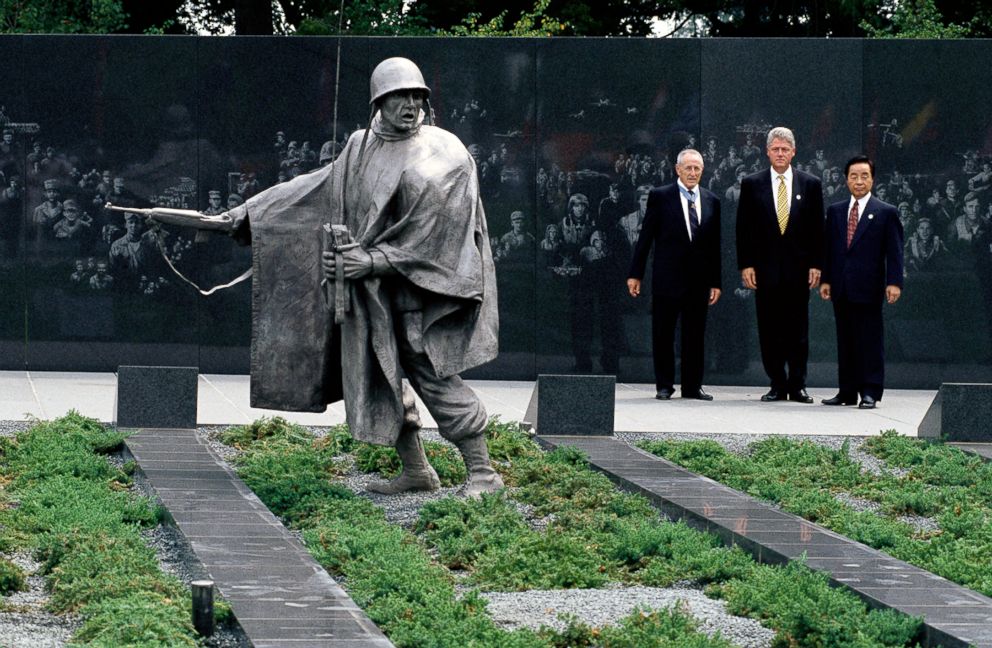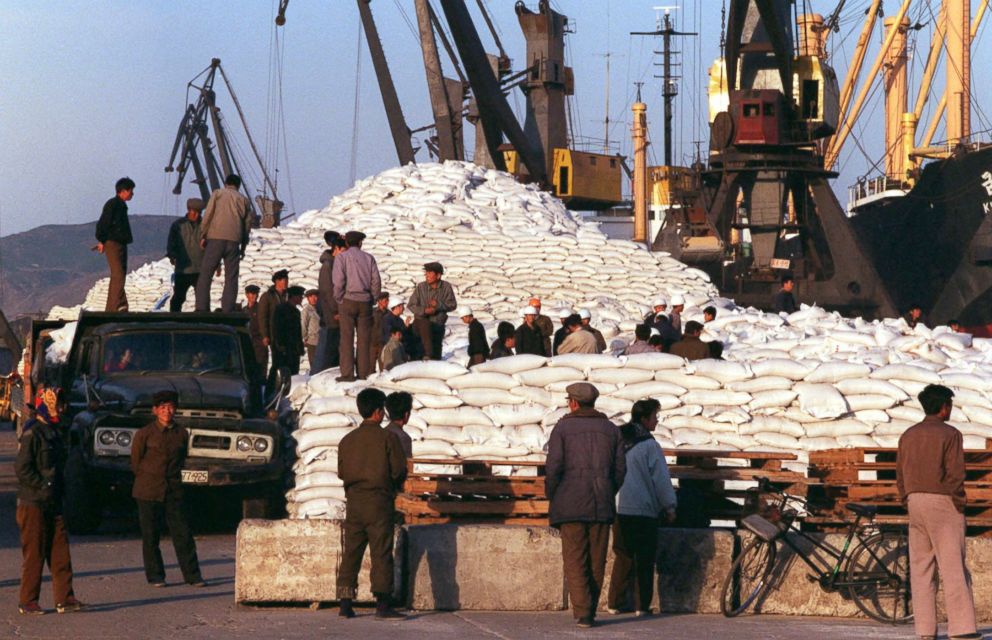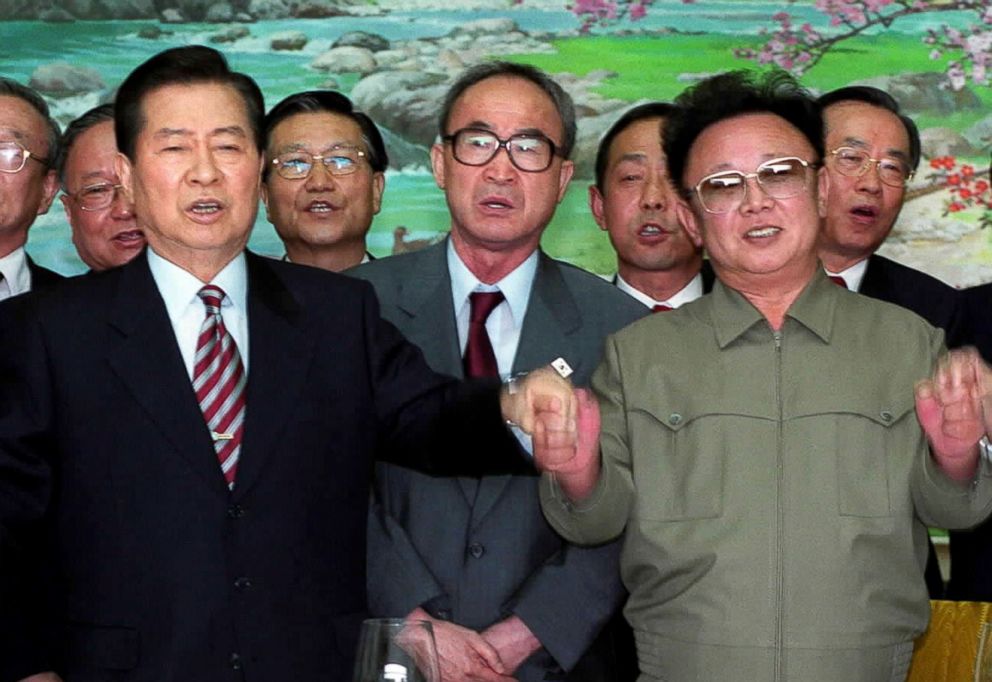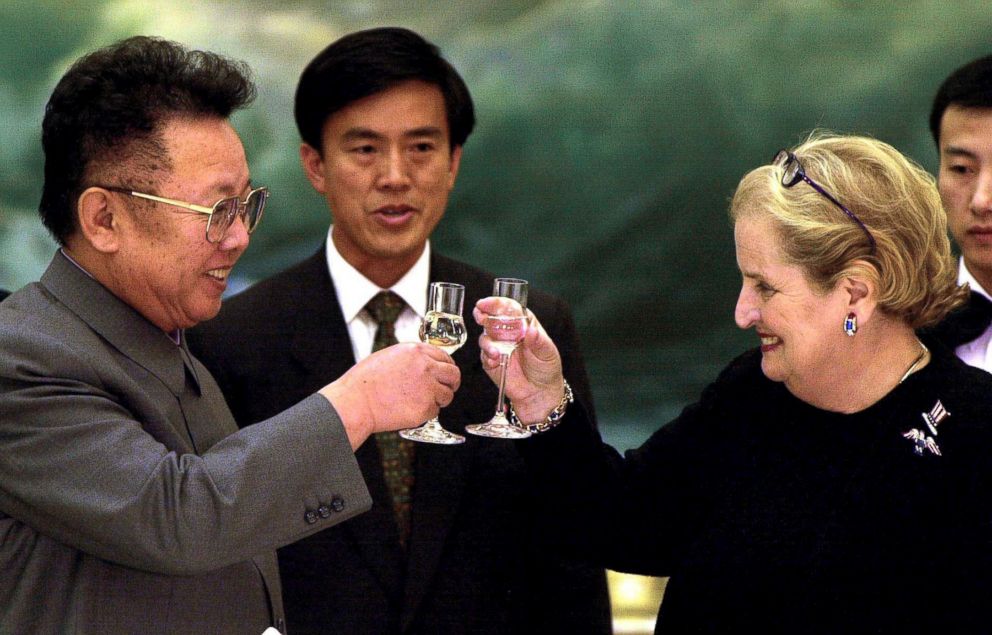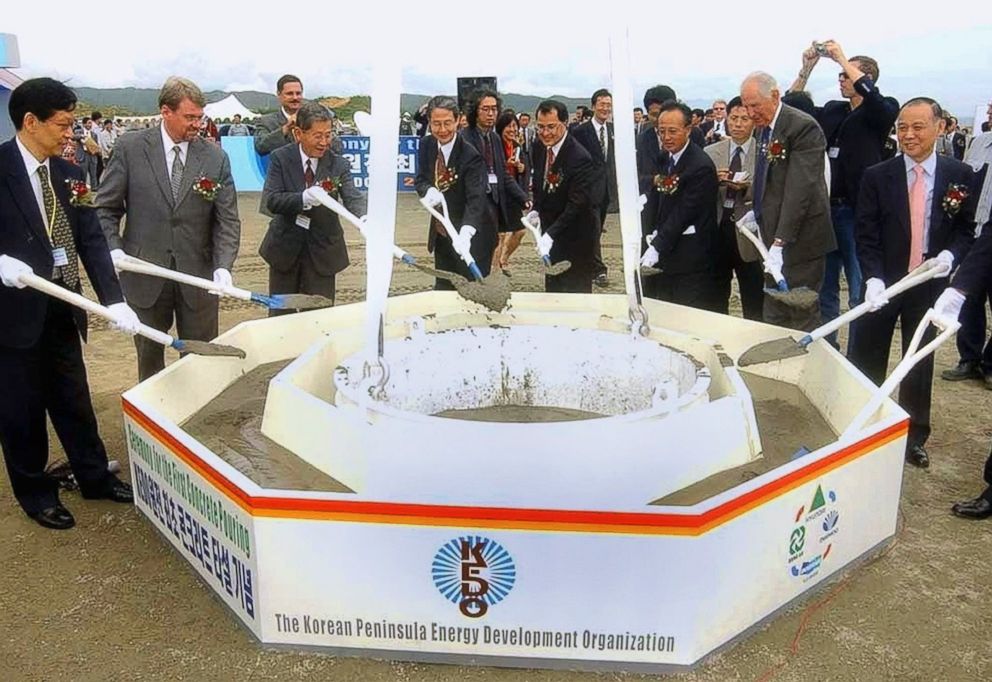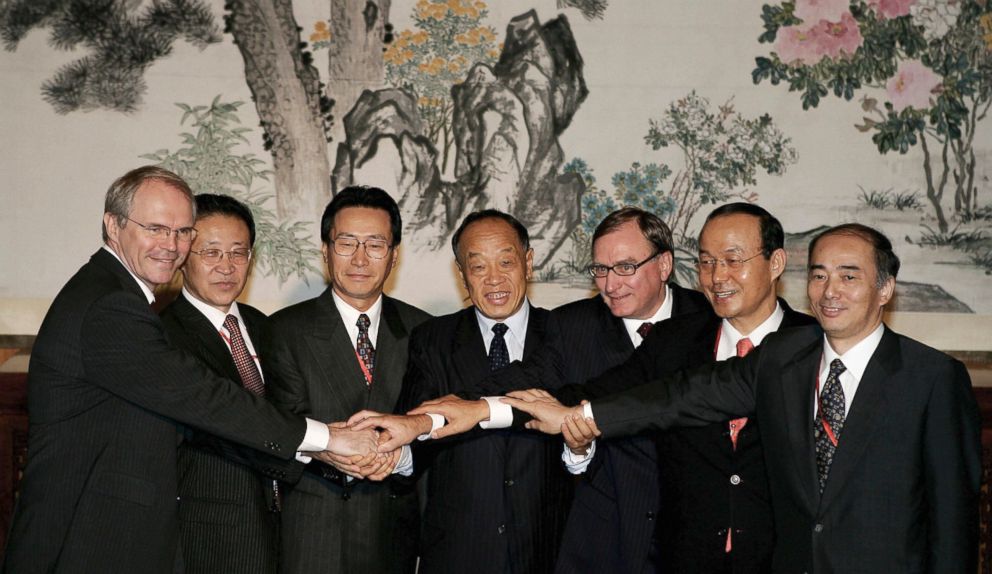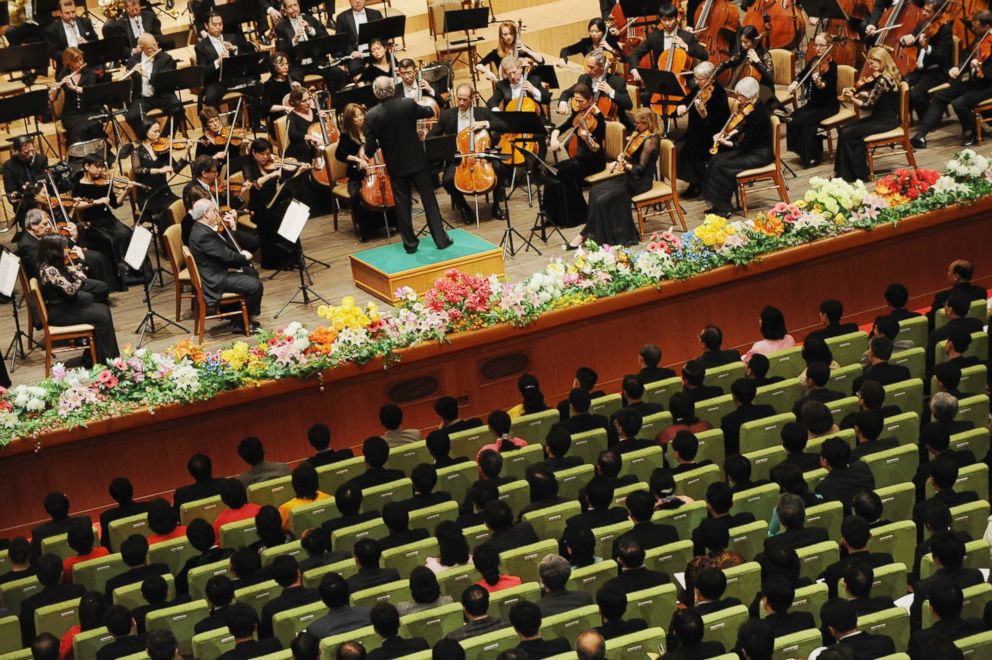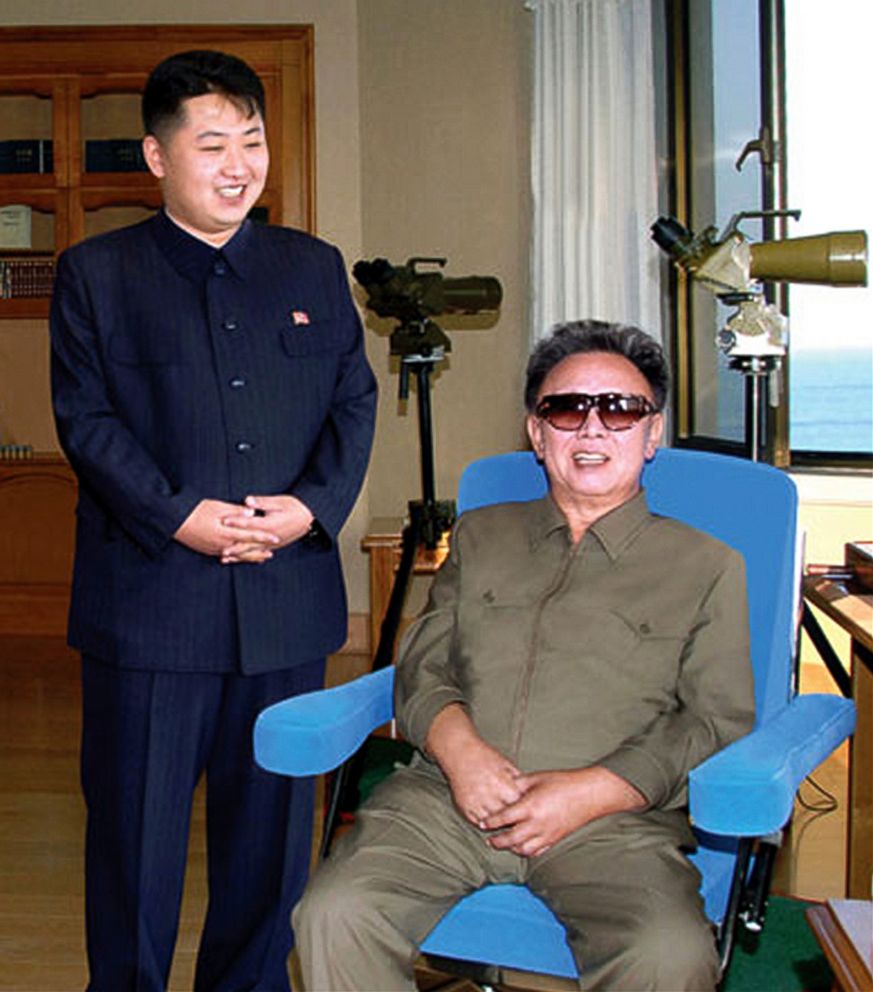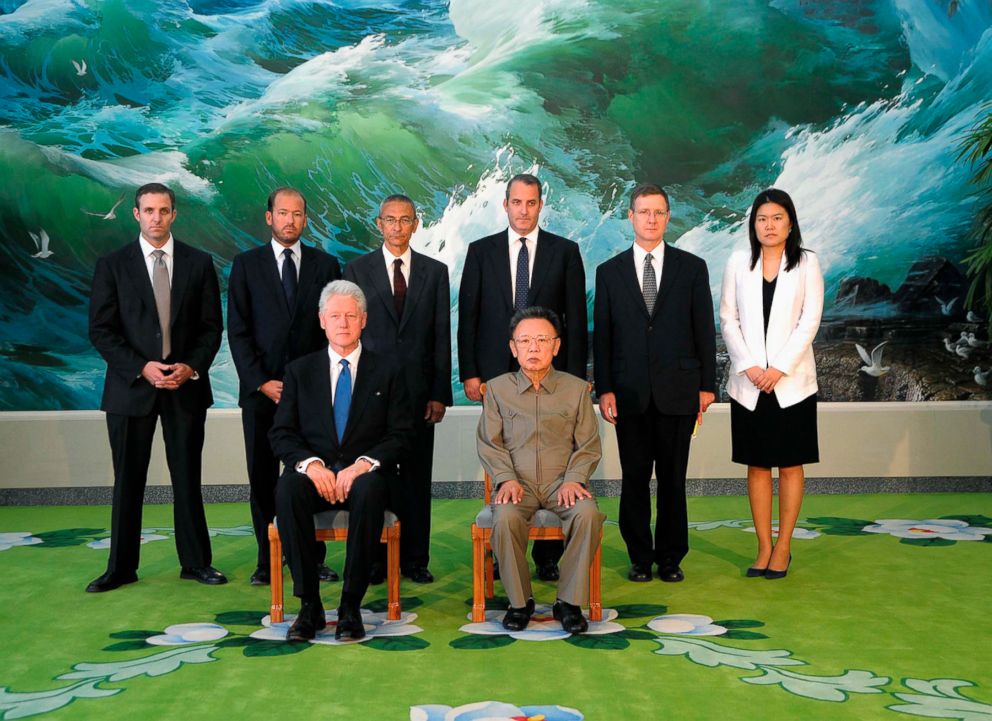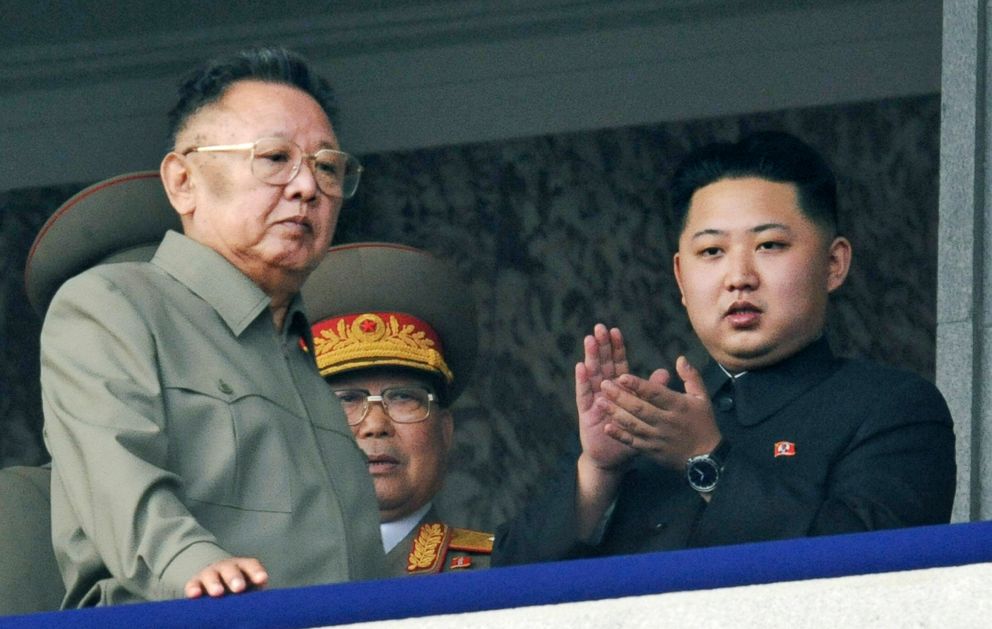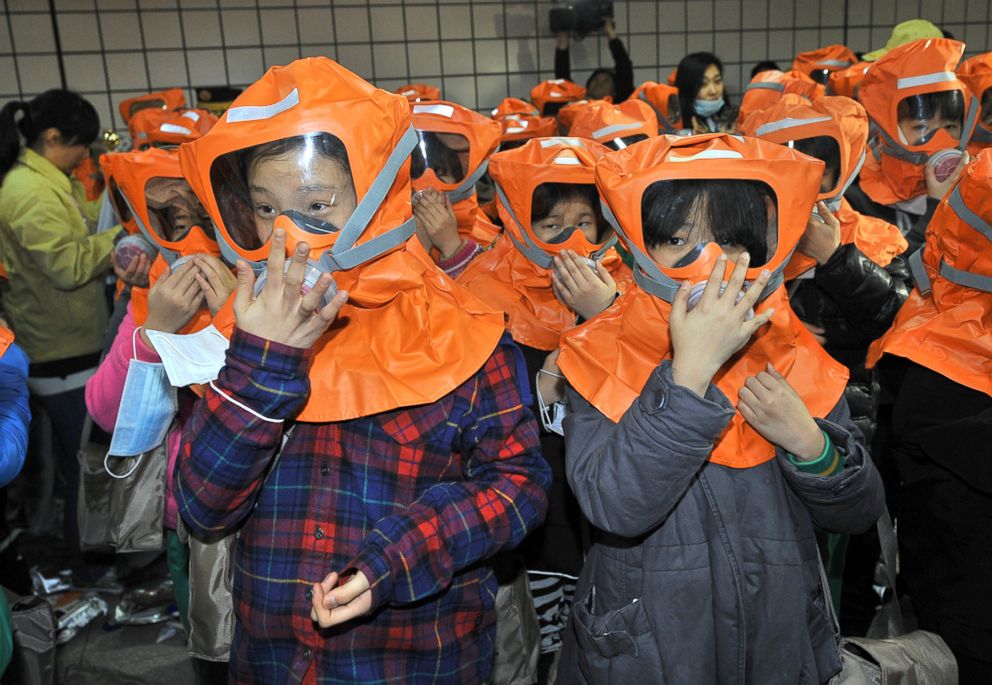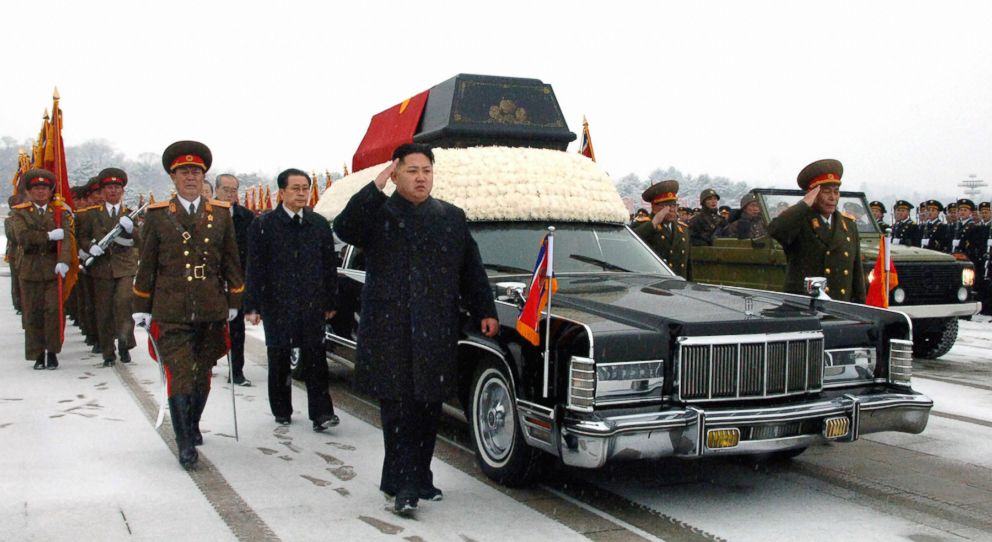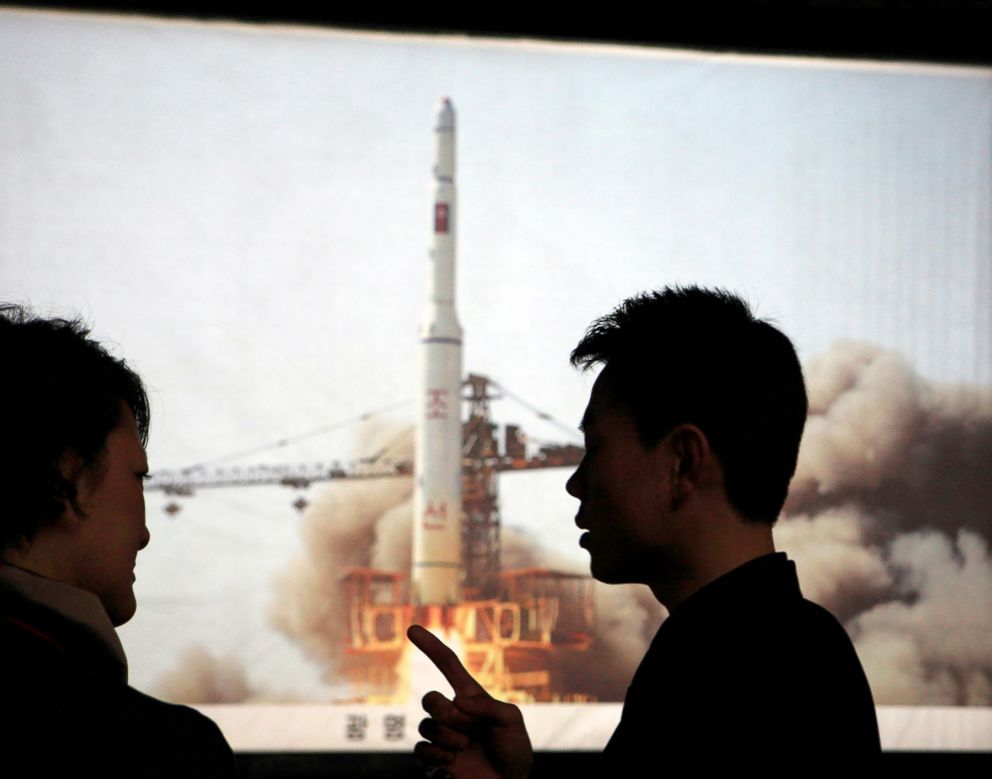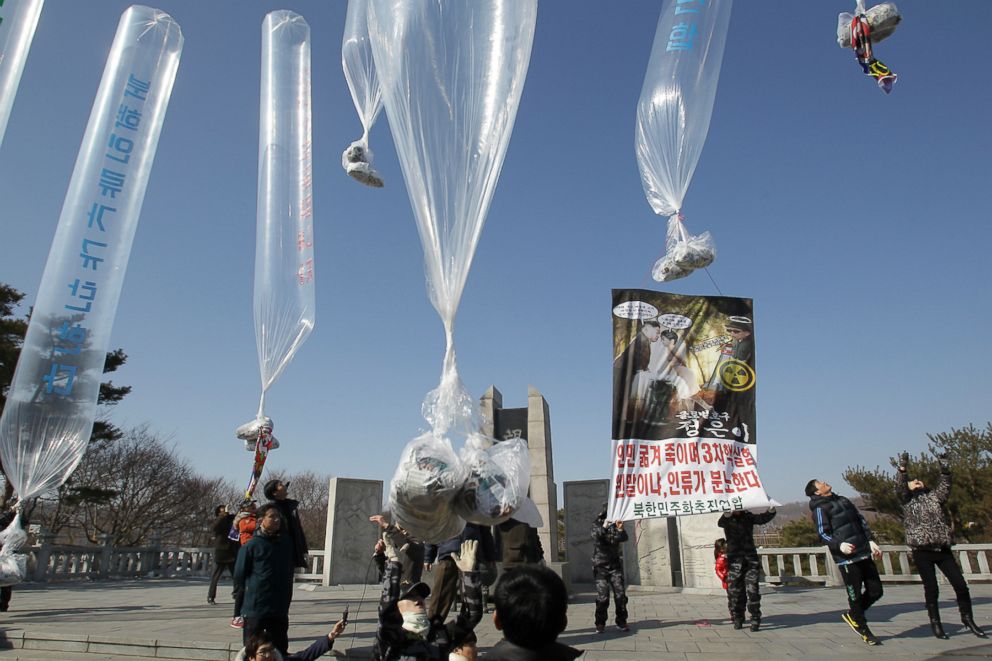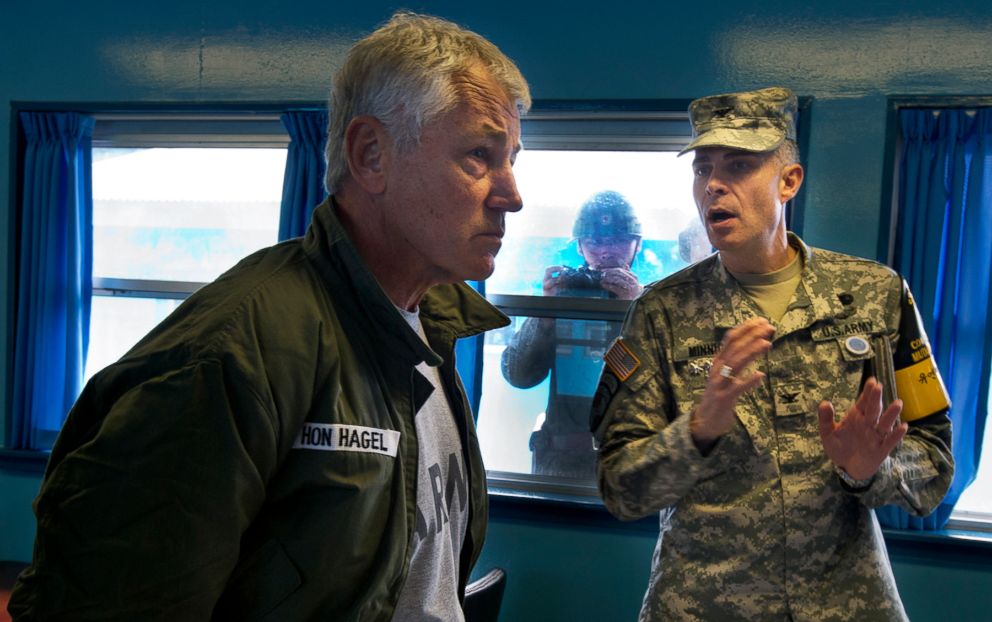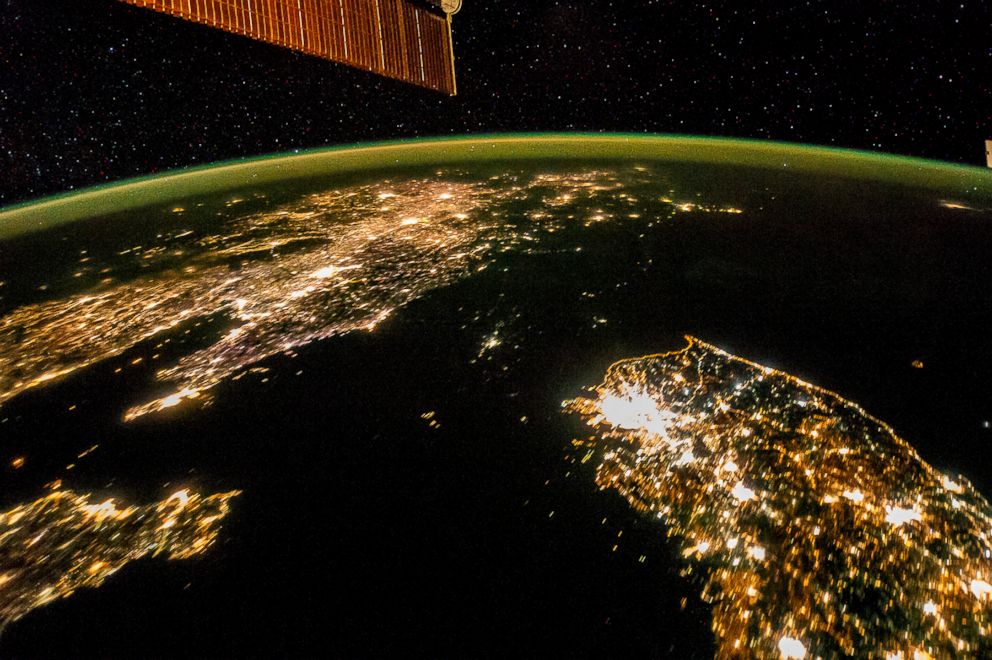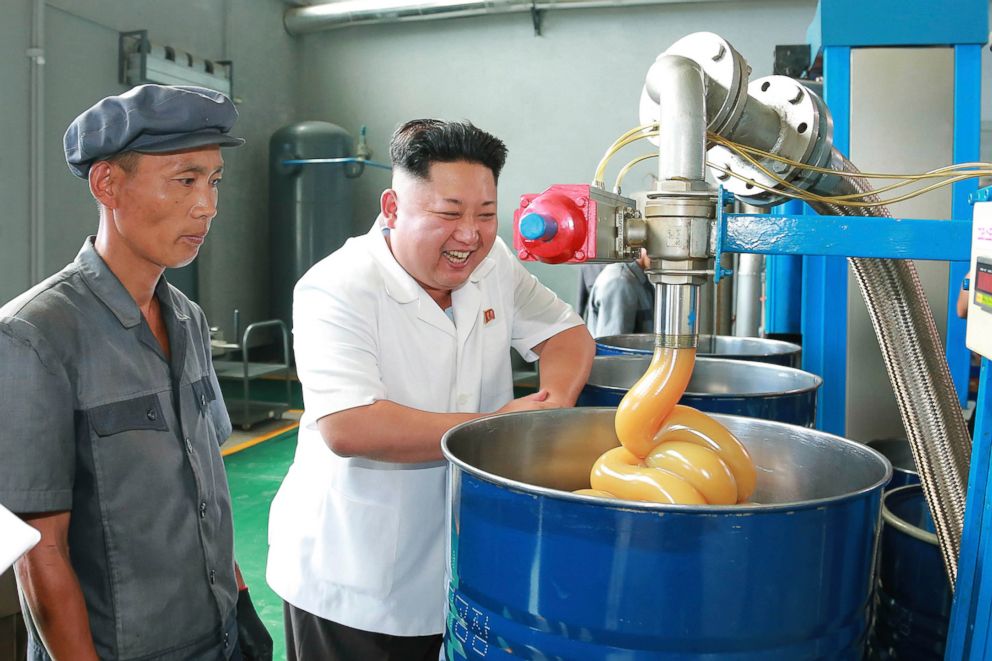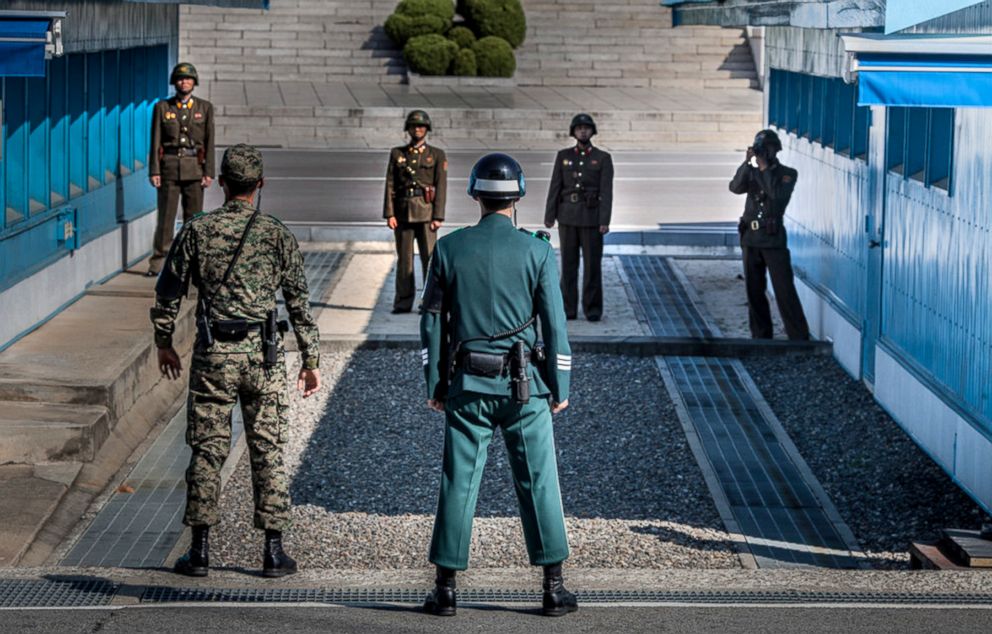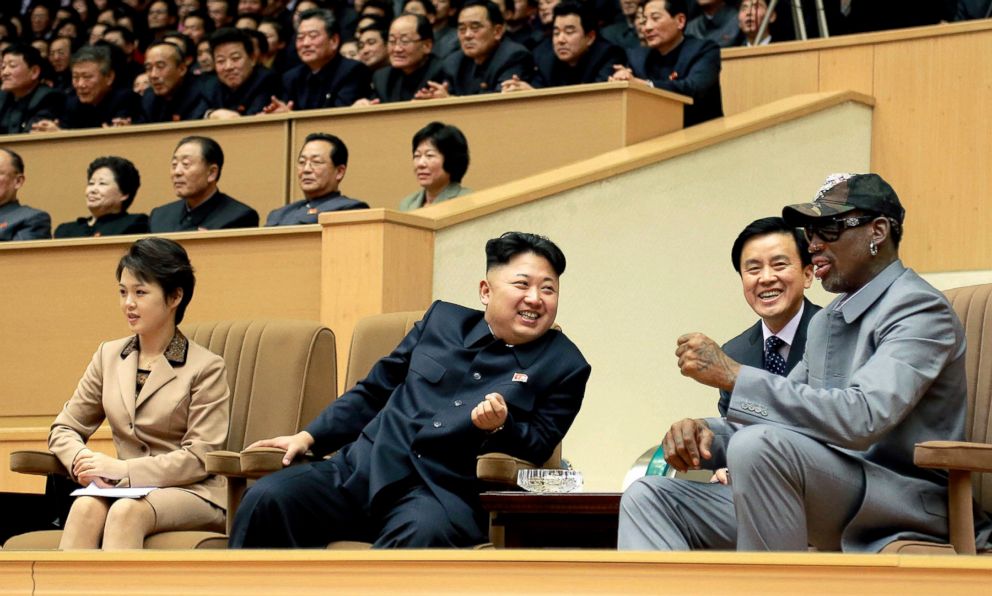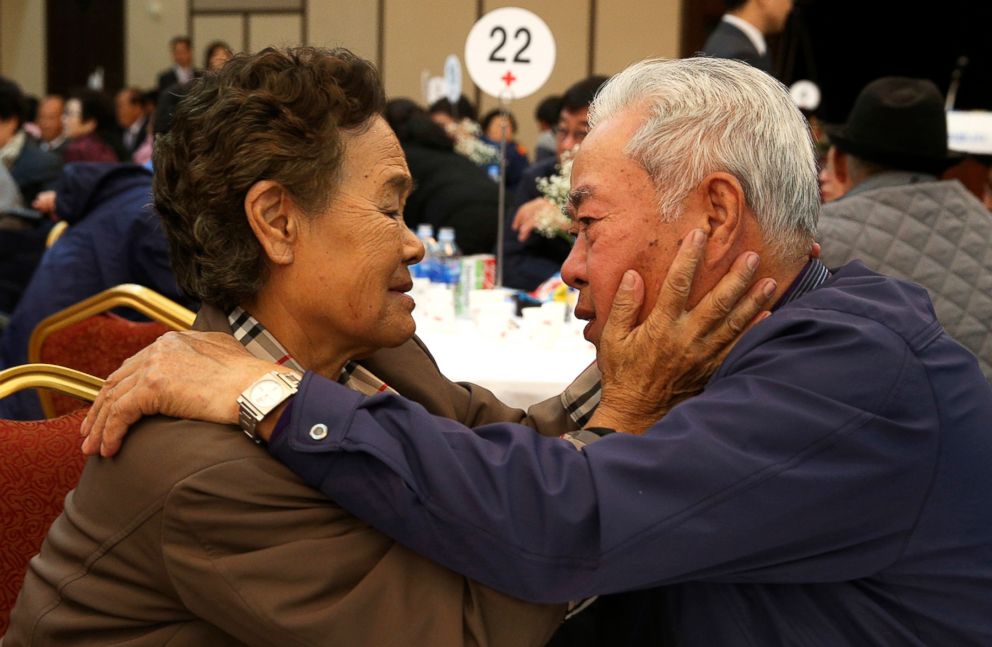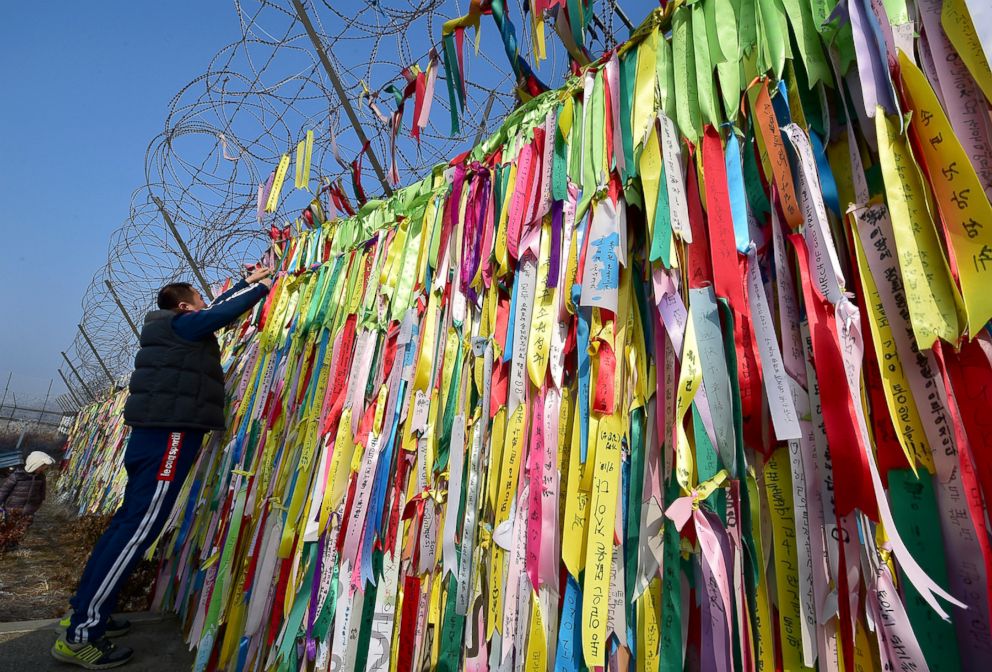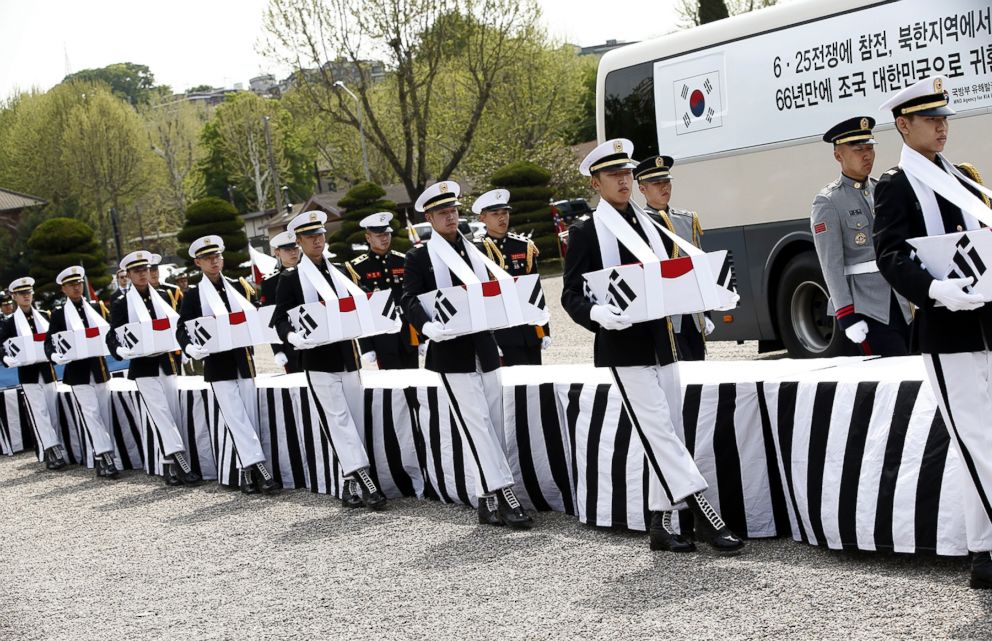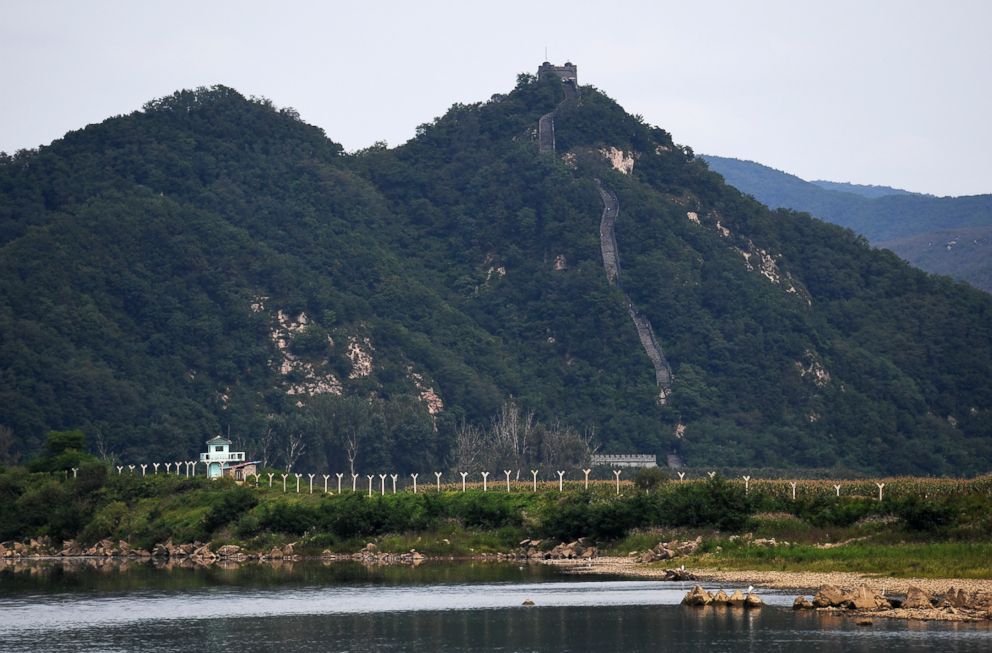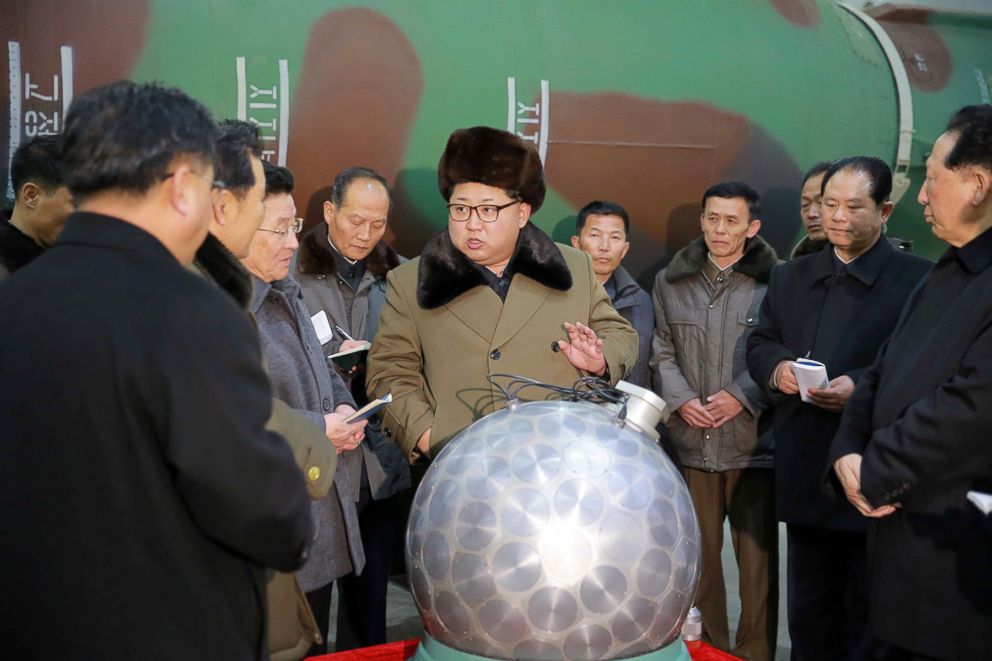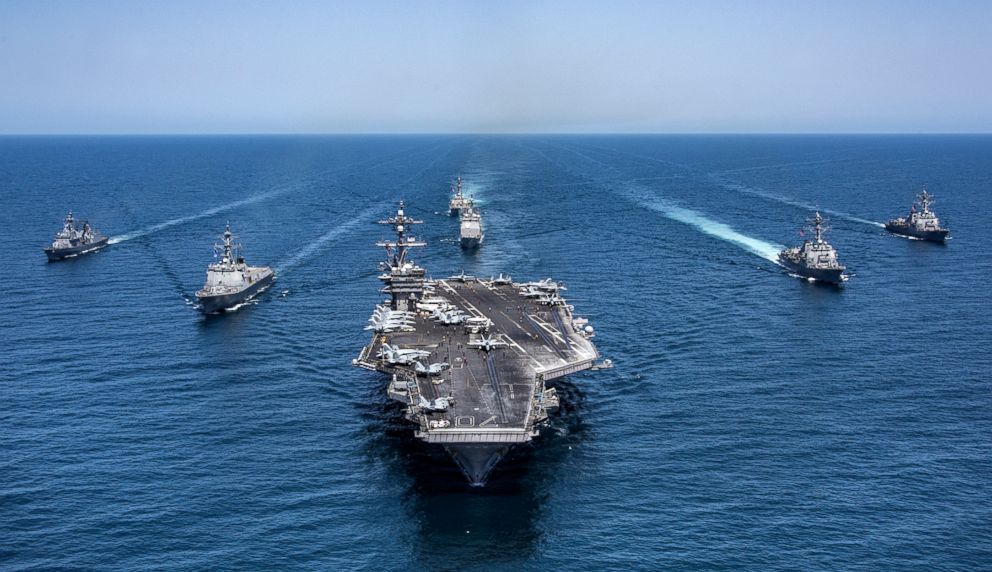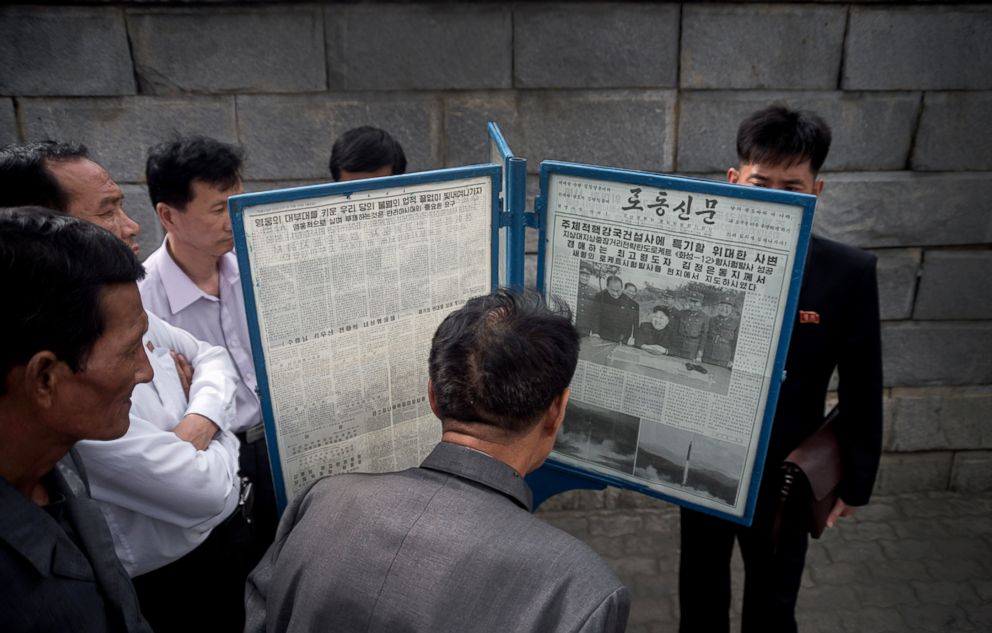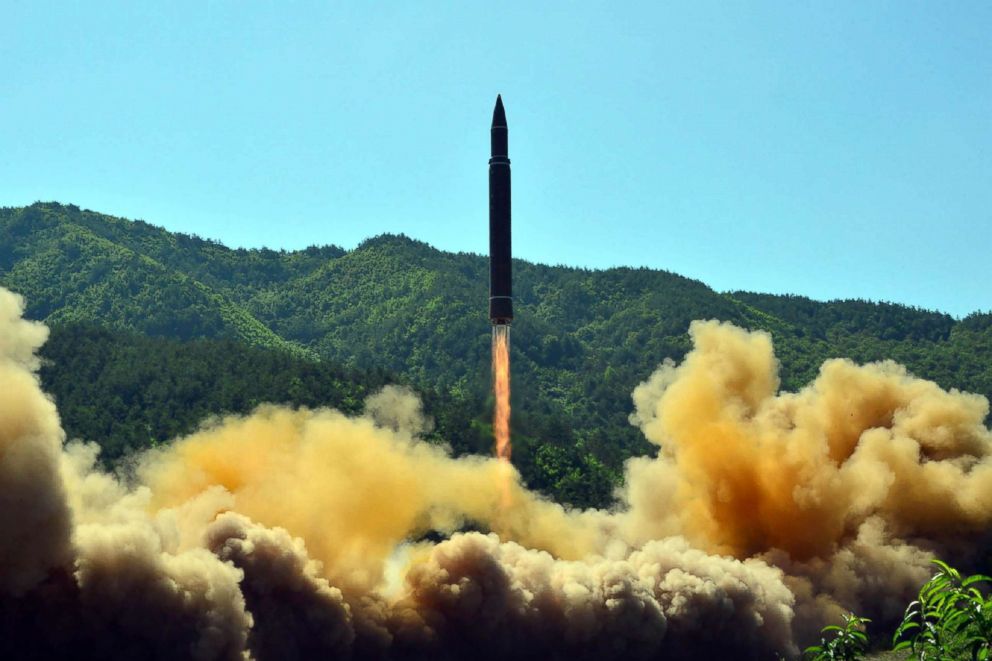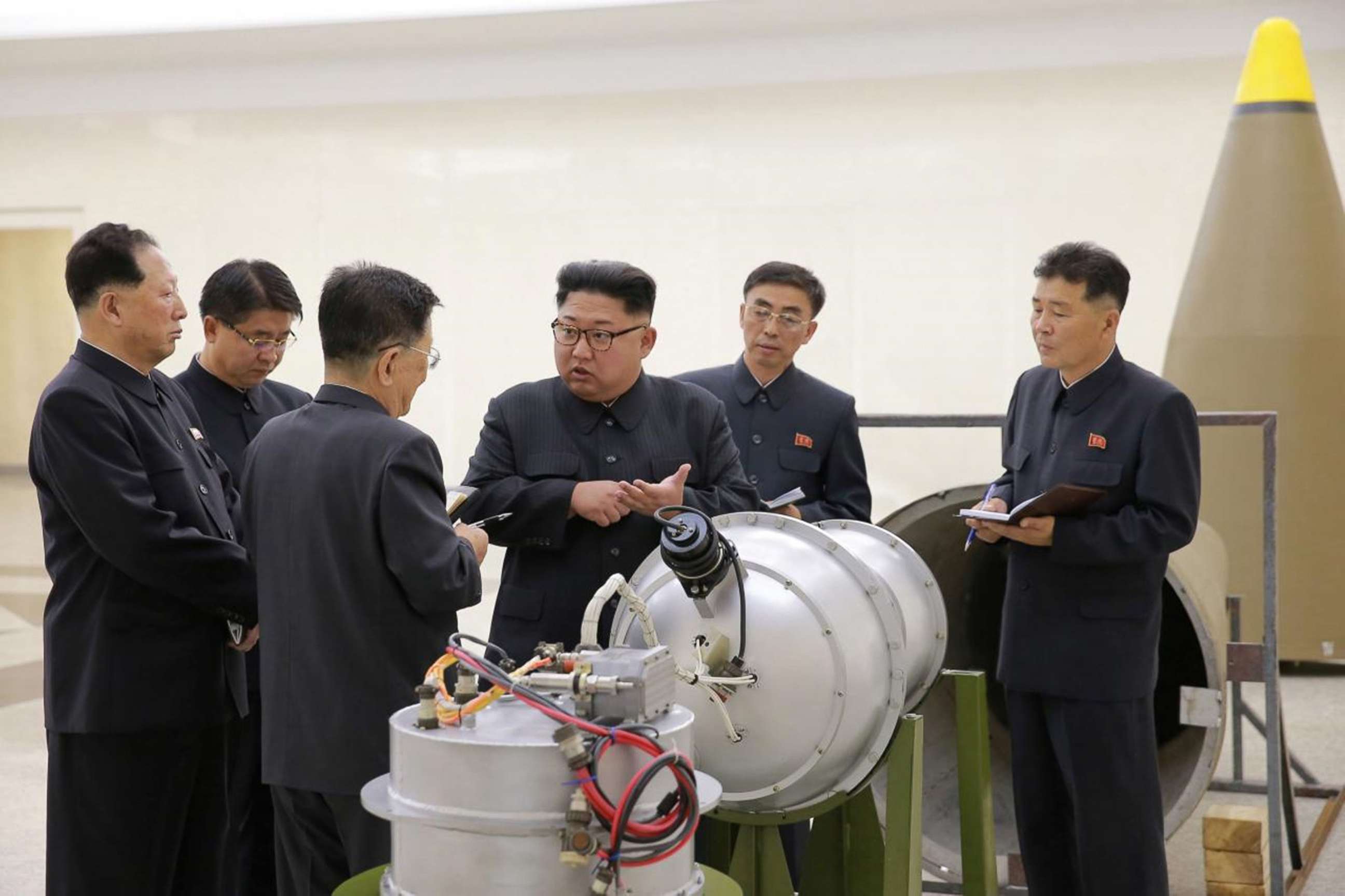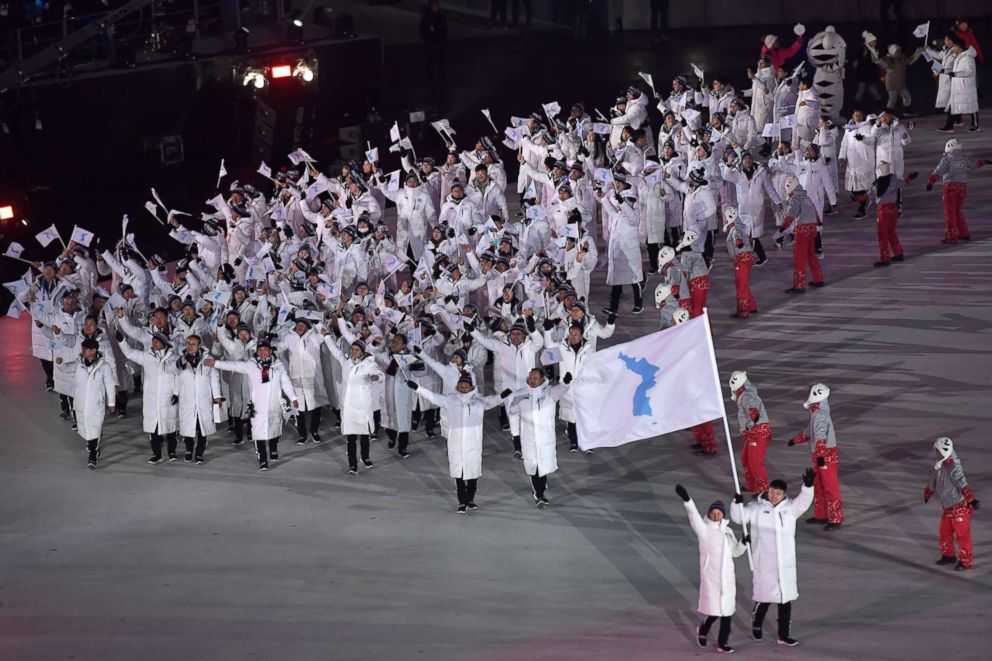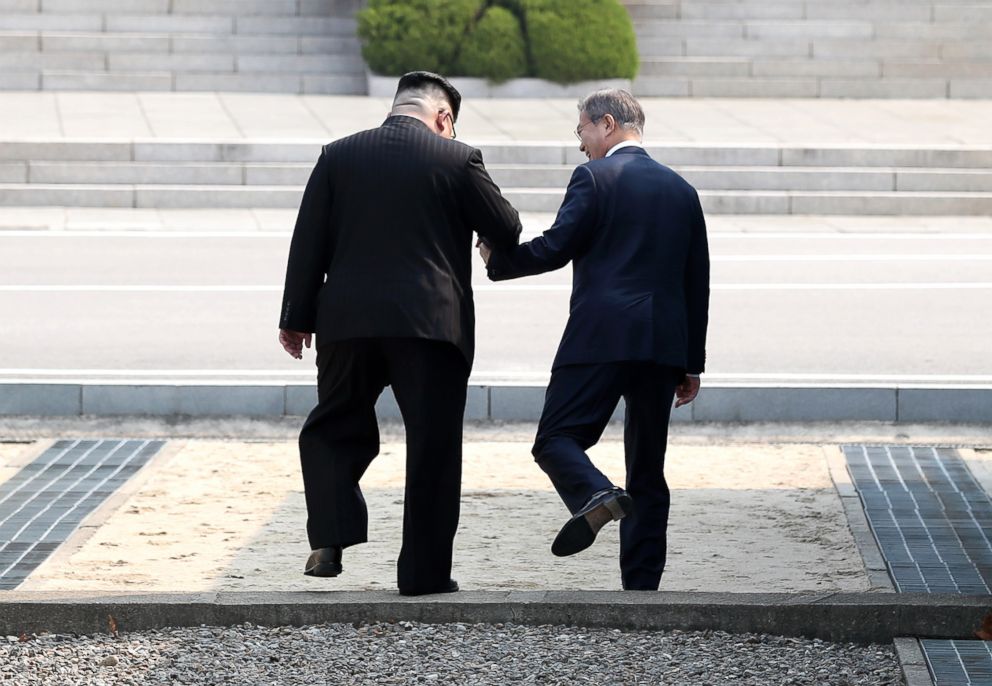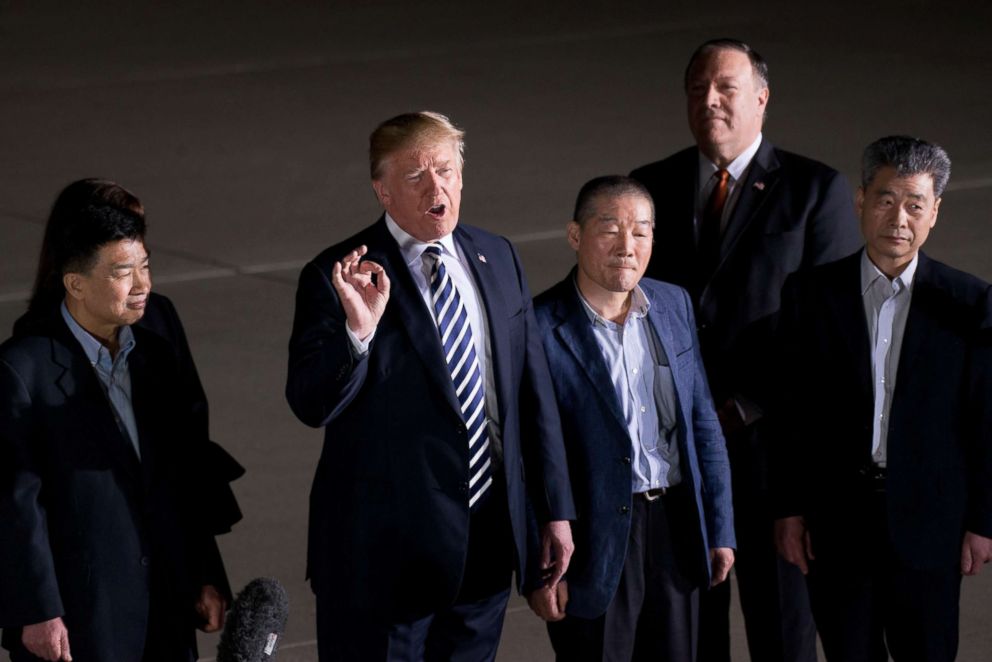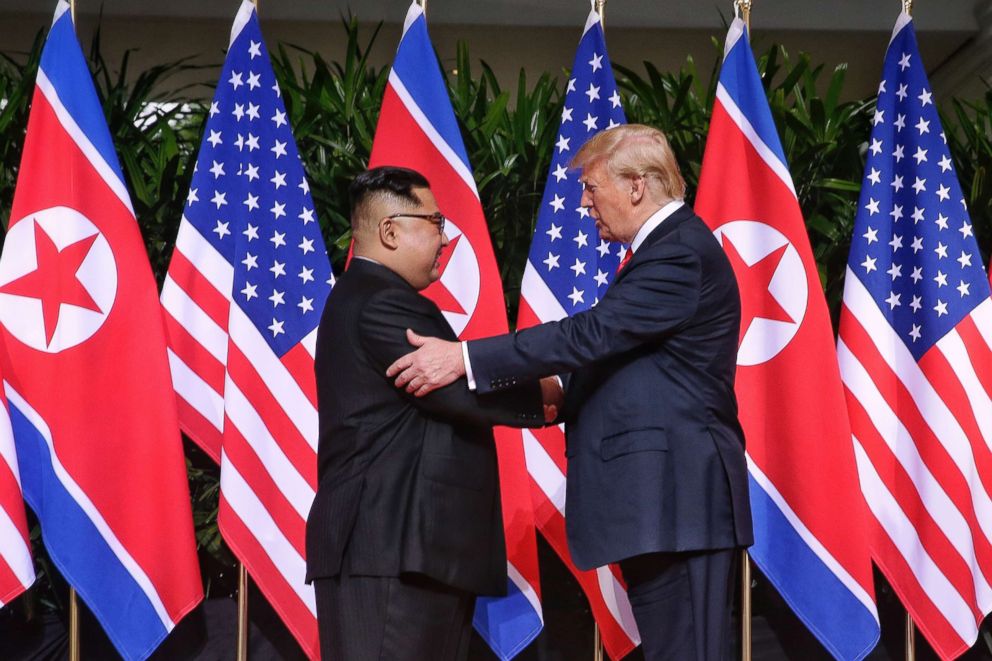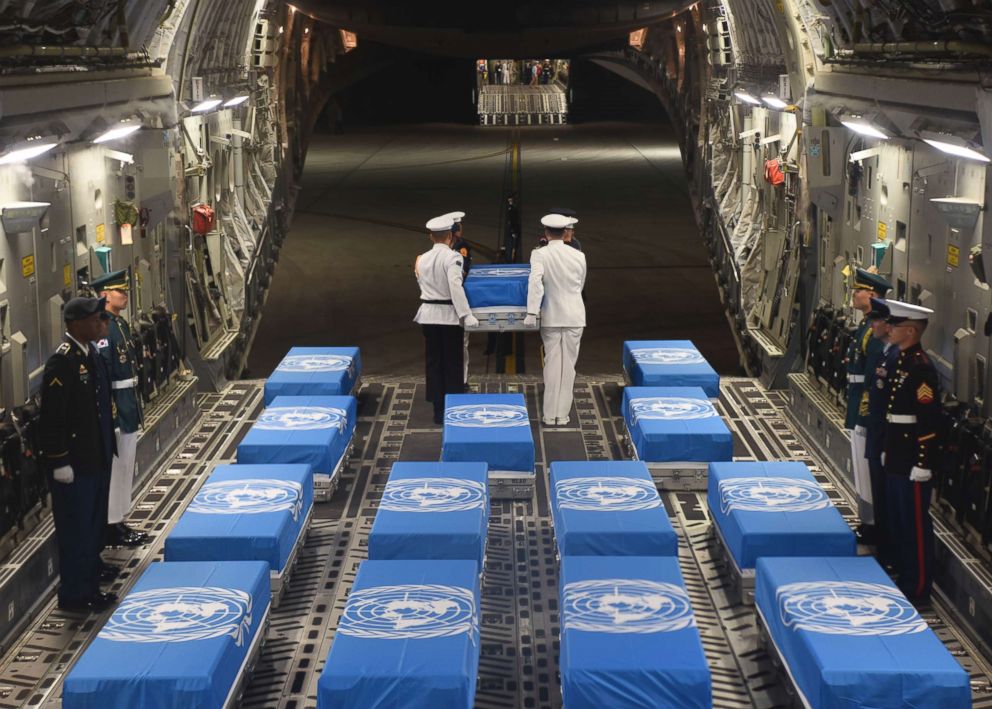ANALYSIS: North-South Korea talks recall past meetings, except now North Korea is a greater threat
A difference from the past is that now North Korea is more of a real threat.
SEOUL, South Korea -- South Korea’s President Moon Jae-in and North Korean leader Kim Jong Un will meet on April 27, officials from both Koreas agreed on Thursday. On the agenda are denuclearization, establishment of peace and improving inter-Korean relations, according to the South’s Unification Minister Cho Myoung-gyon.
The summit is expected to set the ground for a following meeting planned “sometime before May” between President Donald Trump and Kim. Speculation has mounted as to whether the two strong-headed leaders will be able to strike a deal. Doubts have lingered about whether the summit will even happen, with skeptics pointing out that the two countries have been down this path before and that North Korea cannot be trusted.
“Remember, North Korean regimes have repeatedly used talks and empty promises to extract concessions and buy time. North Korea uses this to advance its nuclear and missile programs. We’ve got to break this cycle,” said House Foreign Affairs Committee Chairman Ed Royce, R-Calif., earlier this month.
A quick look back at history shows striking similarities between the situations in 1994 and where we are today. North Korea provokes militarily with missile tests; the U.S. and North Korea exchange verbal threats of war; at the very height of tensions Pyongyang throws a surprise proposal to resolve issues; and Washington agrees to a deal. The only difference now is that the North is much more of a real threat with missiles topped with nuclear warheads powerful enough to hit the U.S.
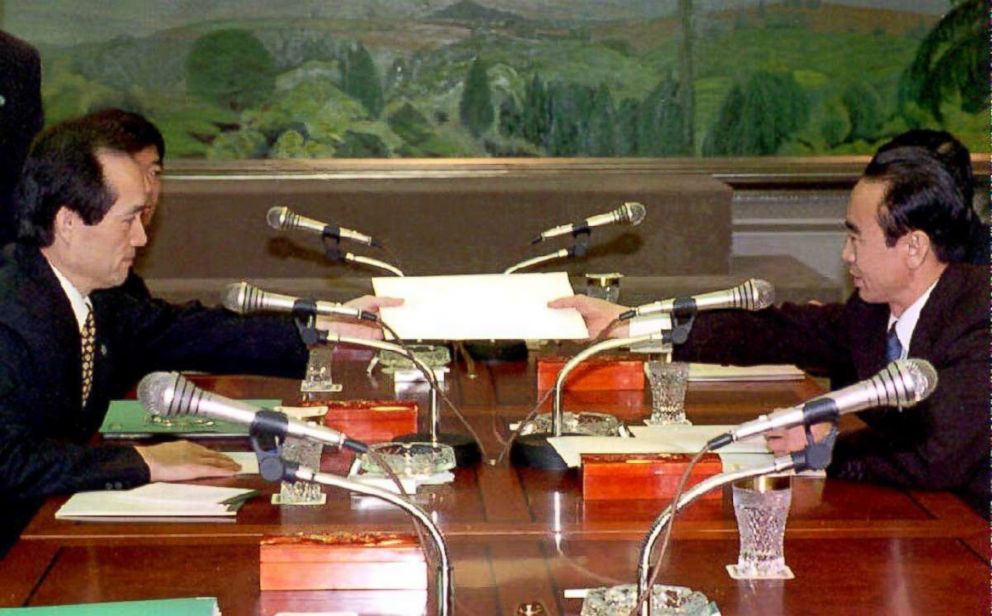
That 1994 deal, called the Agreed Framework or Geneva Agreement after the city where it was signed, eventually failed due to multiple complex reasons. Some analysts say the possible causes include limitations with the Bill Clinton administration, the deep-rooted insecurity of the North Korean regime and mistrust between the two nations over the decades since the Korean War ended without a peace treaty in 1953.
As leaders of the U.S., South Korea and North Korea prepare for the two summits in coming weeks, a look back at history may offer a glimpse of what could be on the agenda and what lessons might be learned.
In 1992, the International Atomic Energy Agency inspection team had discovered disparities from what North Korea had initially declared in accordance to the Treaty on Non-Proliferation of Nuclear Weapons to which Pyongyang became a member back in 1985. The North was thought to possibly possess undeclared plutonium, leading the atomic energy inspection team to request further examination of two suspected nuclear reactor sites. Pyongyang denied access and then, in March 1993, announced it was withdrawing from the treaty. That bombshell declaration signaled that North Korea was determined to go nuclear, sparking an unprecedented crisis on the Korean peninsula.
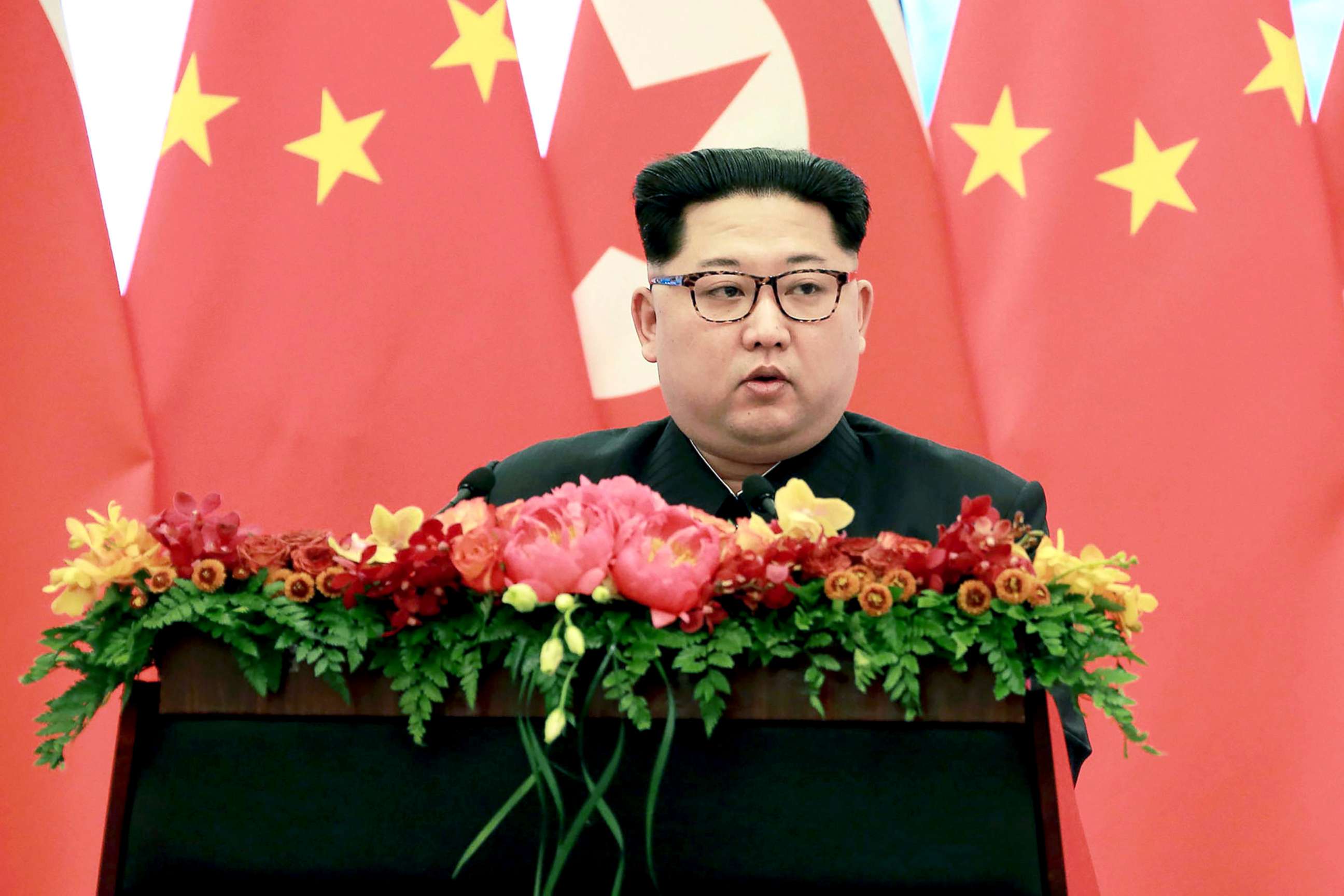
Just like this time, it was the North Koreans who first suggested negotiations after an 18-month-long period of threats and provocations. The Clinton administration took the offer but demanded immediate inspections before any further talks, after which Pyongyang reluctantly allowed the IAEA to visit a plutonium reprocessing plant in Yongbyon.
The Agreed Framework was signed by then-U.S. Ambassador-at-large Robert Gallucci and North Korea’s vice minister, Kang Sok Ju, both committing to the following main provisions:
• Both sides will cooperate to replace North Korea’s graphite-moderated reactors and related facilities with light-water reactor (LWR) power plants. The U.S. will make arrangements that will generate approximately 2,000 megawatts of power by a target date of 2003, financed by an international consortium. Alternative energy will be provided in the form of heavy oil, 500,000 tons annually.
• In return, North Korea is to freeze operation of its 5-megawatt reactor and plutonium-reprocessing plant at Yongbyon, and the 50-megawatt Yongbyon reactor and 200-megawatt Taechon plant under construction.
• Both sides will move toward full normalization of political and economic relations. This will include reducing barriers to trade and investment such as restrictions on telecommunications services and financial transactions. Both are to open liaison offices which eventually will upgrade to the ambassadorial level.
• For a nuclear-free Korean peninsula, the U.S. will provide formal assurance that it will not use or threaten to use nuclear weapons against North Korea. In return, Pyongyang will work with Seoul to take steps to implement a previously agreed North-South Joint Declaration to denuclearize.
For a while, the agreed terms seemed to work. But the U.S.-led consortium that was obligated to construct a new energy source for North Korea soon realized the costs were higher than expected. The U.S. Congress had just changed control to the Republican Party, which said the Clinton administration had given up too much in the deal.
The consortium gradually ran into severe debt as the U.S. Congress approved only limited funds that were not enough to carry out the Agreed Framework. Heavy oil shipments were also often delayed. As Gallucci later told Congress in 1998, “The North Koreans have always been disappointed that more has not been done by the United States.”
Other parts of the agreement -- to normalize relations and provide formal assurance that the U.S. would not topple the Kim regime -- also lagged behind the timeline agreed.
The seesaw relationship between North Korea and the United States
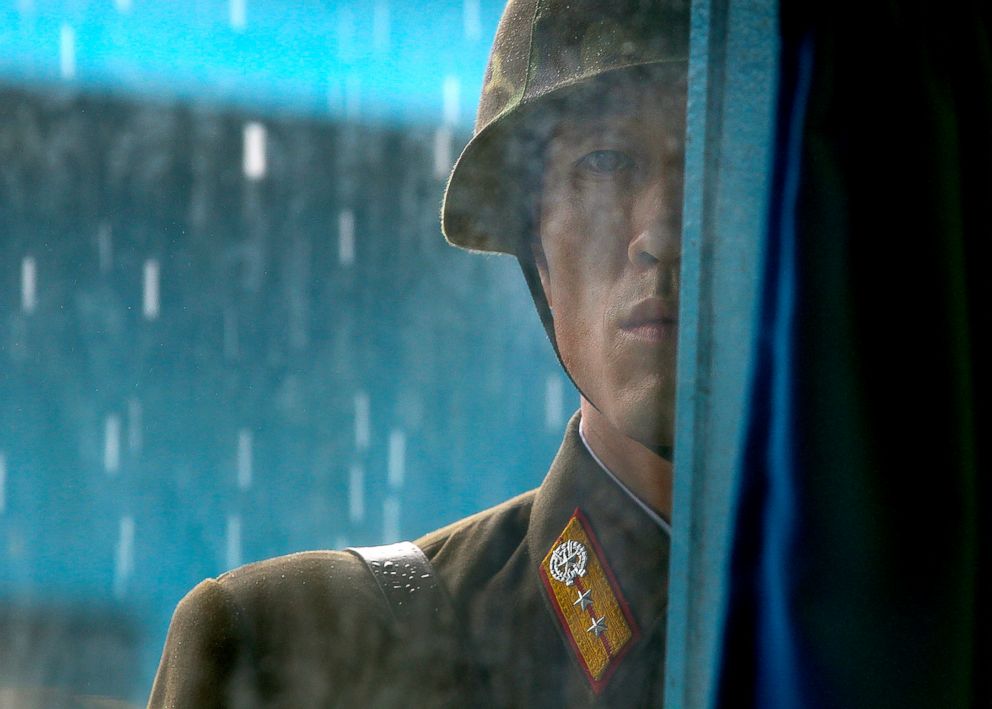
Meanwhile, North Korea continued to test short- and long-range missiles to add pressure on the international community. The most alarming test, in 1998, was of the three-stage Taepodong-1 intermediate range rocket that could fly over Japan, leading to anger and consternation in the United States. Pyongyang claimed the test was not for military purposes and that it had placed a satellite into orbit successfully, a claim the U.S. Space Command contested.
The Clinton administration continued efforts to contain North Korea by conducting a North Korea policy review.
But after President George W. Bush took office in early 2001, his administration found out that North Korea had secretly “obtained equipment suitable for use in uranium feed” and that its “goal appears to be a plant that could produce enough weapons-grade uranium for two or more nuclear weapons per year when fully operational,” as the CIA later reported to Congress in 2002.
This led President George W. Bush to label North Korea as part of an "Axis of Evil," in his first State of the Union Address in 2002, killing what little was left of the spirit of the Agreed Framework.
“This was the hammer I had been looking for to shatter the Agreed Framework,” wrote John Bolton, who is slated to become President Donald Trump's new national security adviser, in his 2008 memoir, "Surrender Is Not an Option," in a chapter titled, “Driving a Stake Through the Agreed Framework.” Bolton was at the time Bush's undersecretary of state for arms control and international security.
The 1994 Agreed Framework could be viewed as a failure or as a partial success in that it froze the program for a while. Either way, though, it proved that any goal of "complete verifiable irreversible dismantlement" may be impossible to achieve.
North Korea’s current nuclear program is far more advanced than two decades ago, and its missiles and nuclear bombs are hidden underground in thousands of military facilities. Realistically an inspection team would not be able to check the sites even with North Korea’s full cooperation.
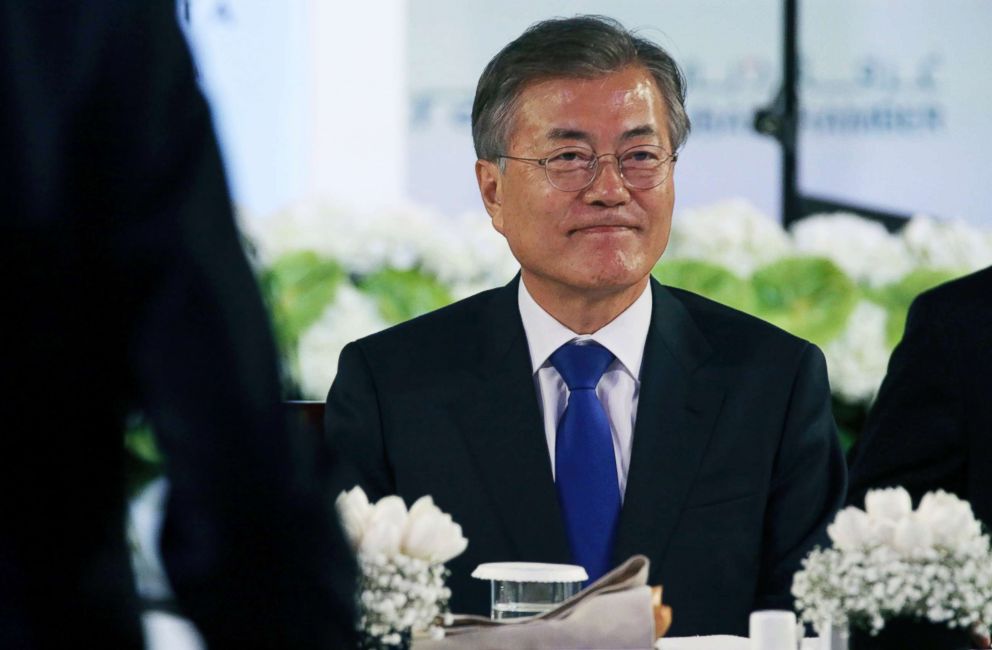
“The first salvo in the negotiations is critical for gaining leverage. Either Moon or Trump has to be prepared to tell the North Koreans, 'You must allow the inspectors to see everything we want. Everything. Otherwise, there’s no deal,'” said Jinwoo Kim, adjunct professor at the Graduate School of Political Studies at Kyonggi University.
Kim pointed out that in the 1990s the international inspection team was denied access to suspected sites that the North categorized as "military facilities."
“Lessons learned is that you can’t trust the North Koreans,” Jinwoo Kim said.
South Korean analysts say the U.S. must have skillful negotiators to deal with the North Koreans, unlike the Clinton administration members who were dubbed "too gentleman-like" and "overtly diplomatic." In that sense, Trump may be the person who could push Pyongyang to a more sensible and realistic deal.
“Precisely because [Trump and Kim] both have the reputation of being either bold or reckless, an unexpected surprise might materialize," Jinwoo Kim said. "We can’t discount that out. Trump is a skillful negotiator. He’s someone who would walk out to get a better deal.”
